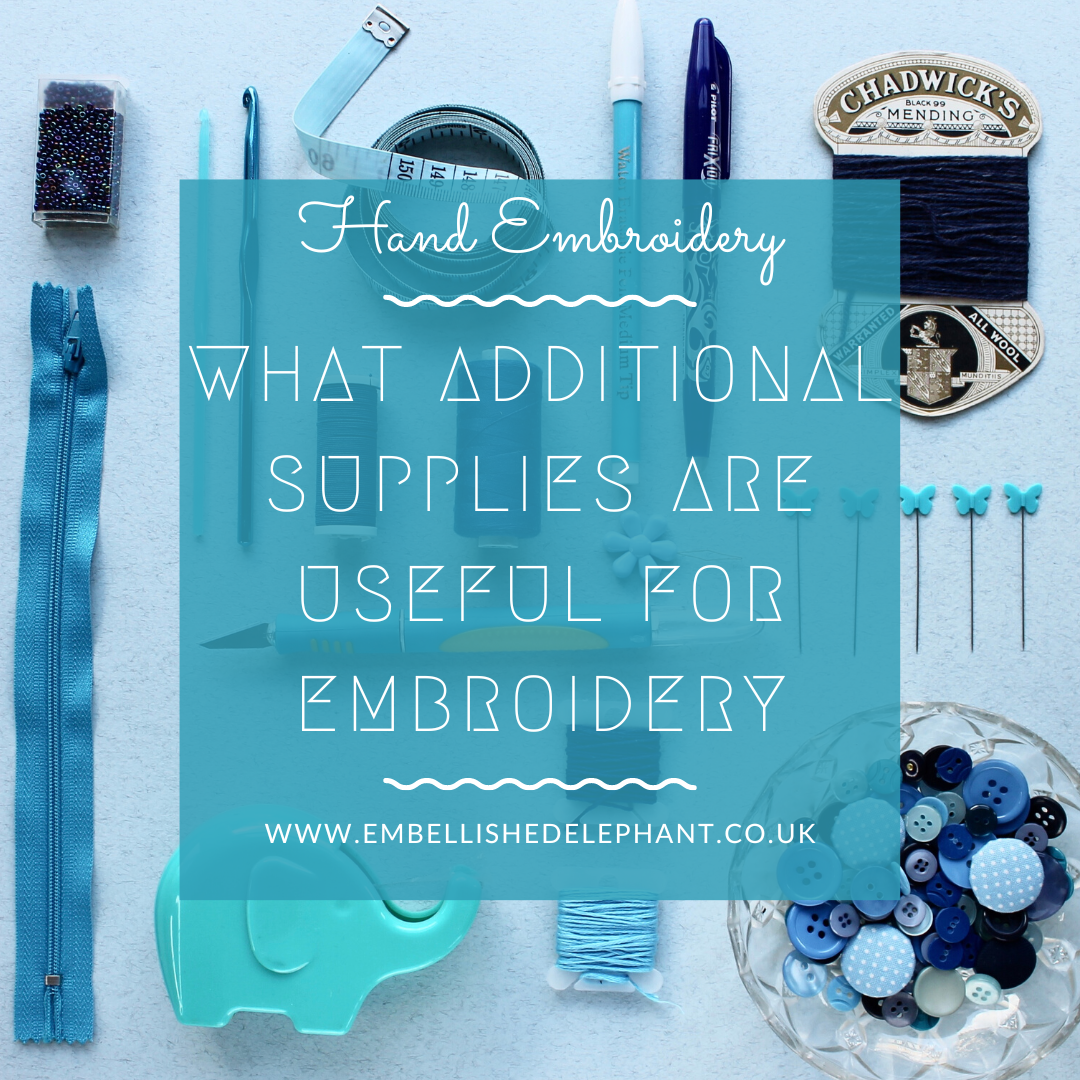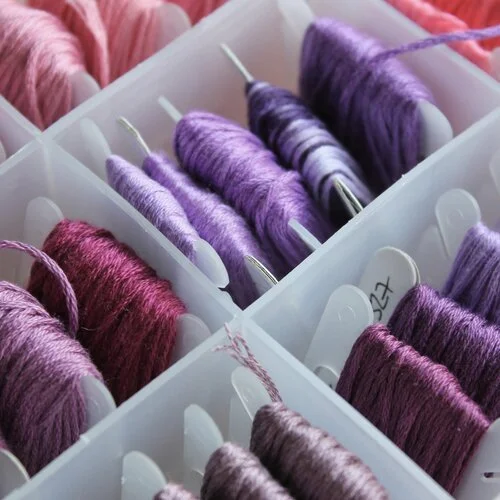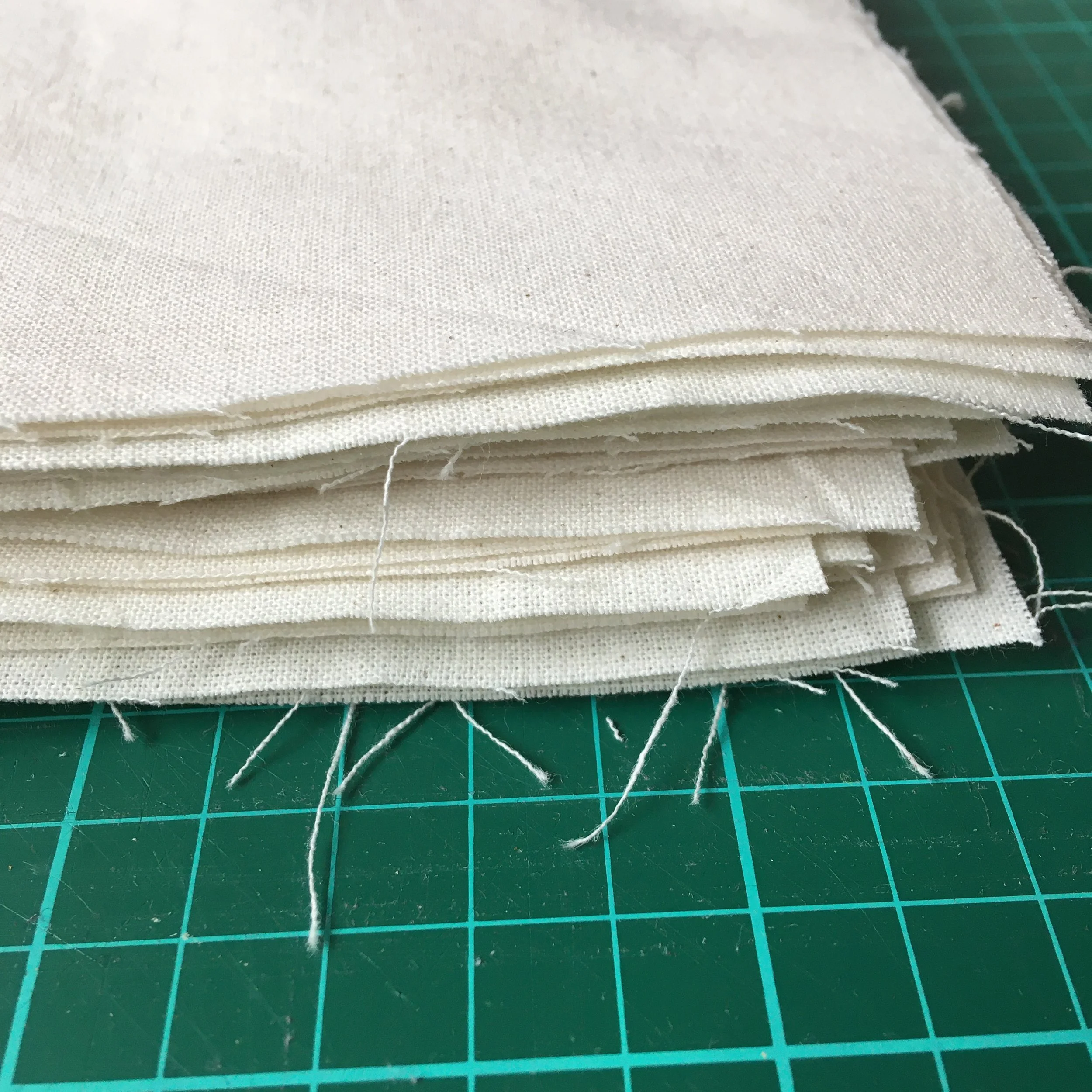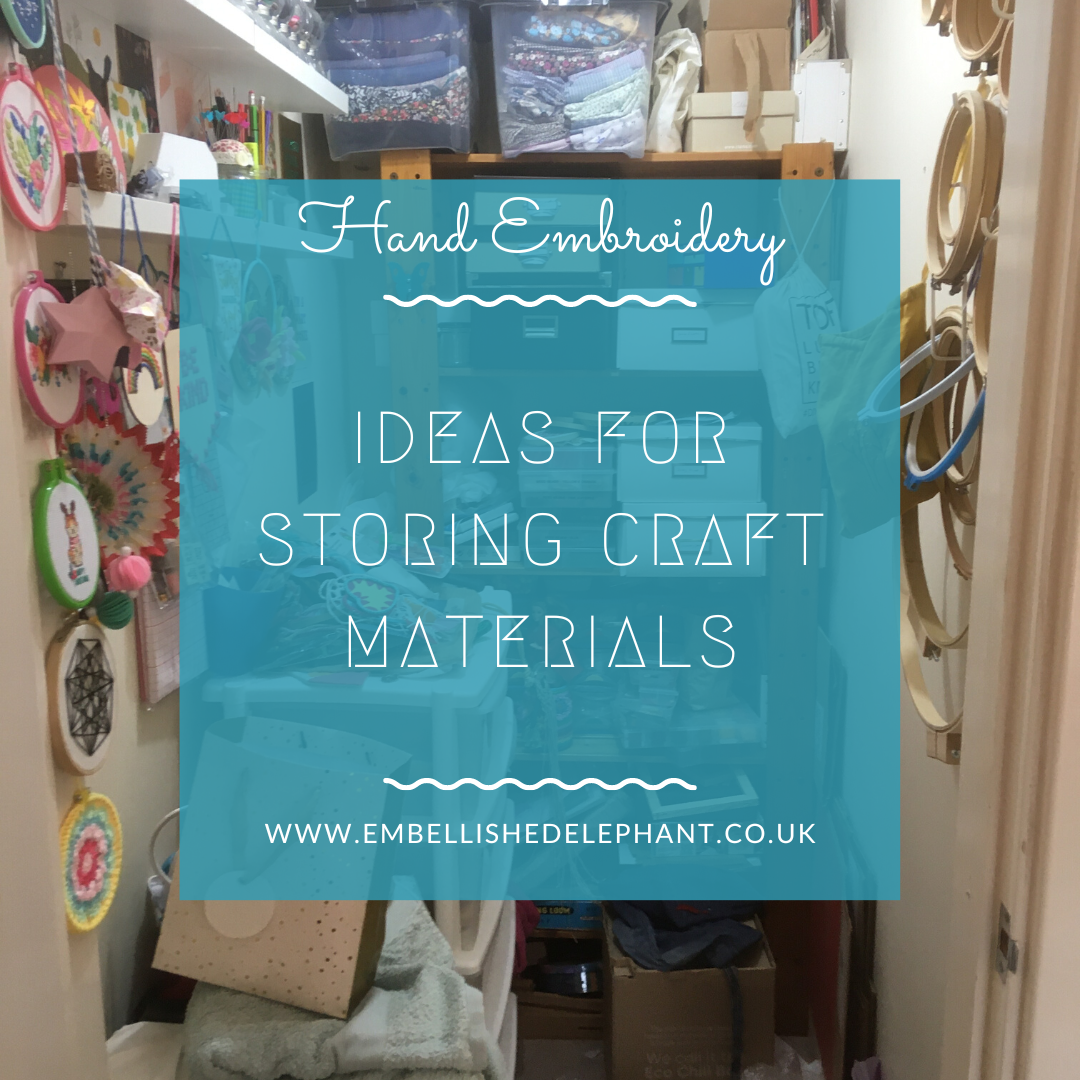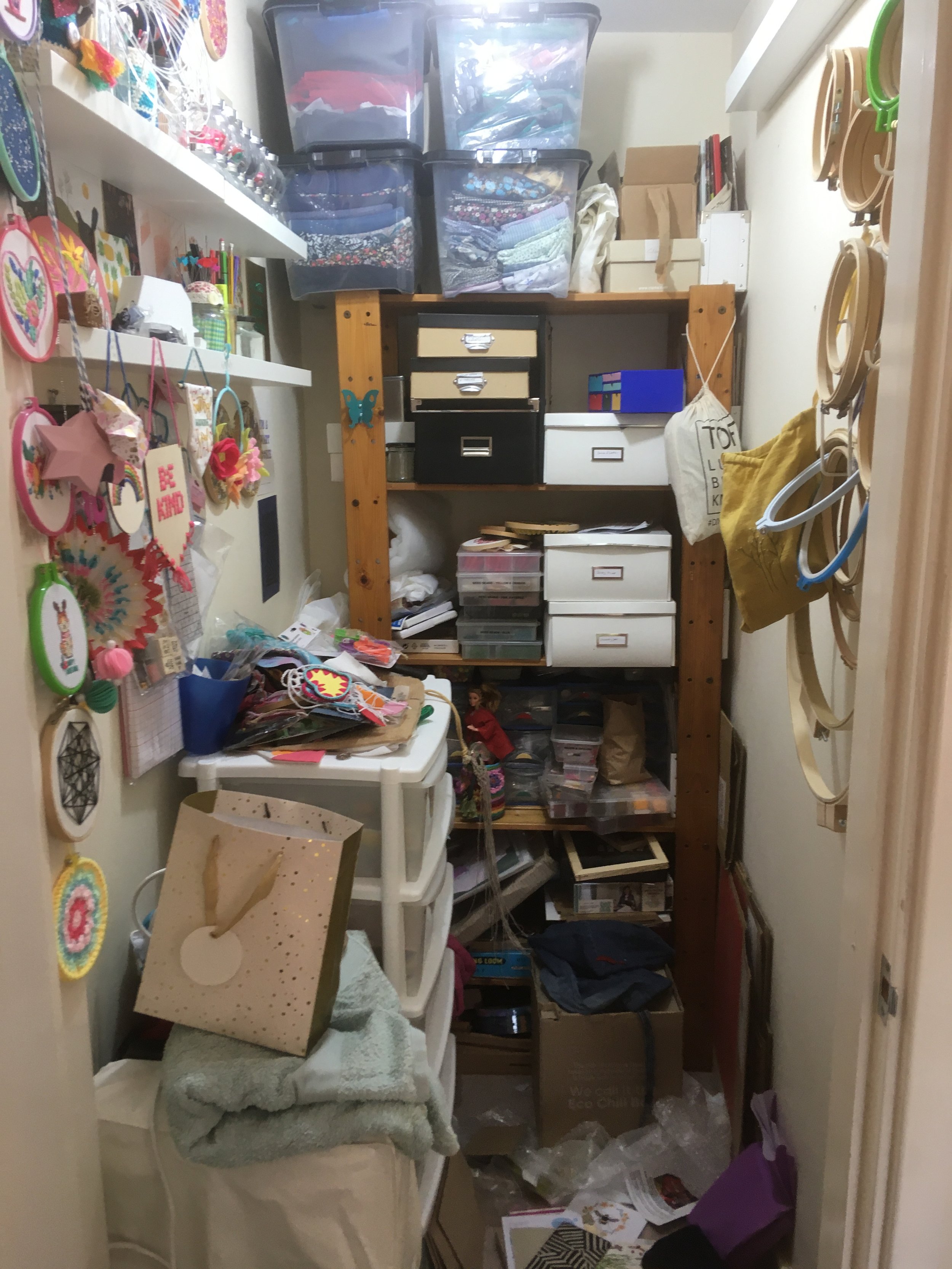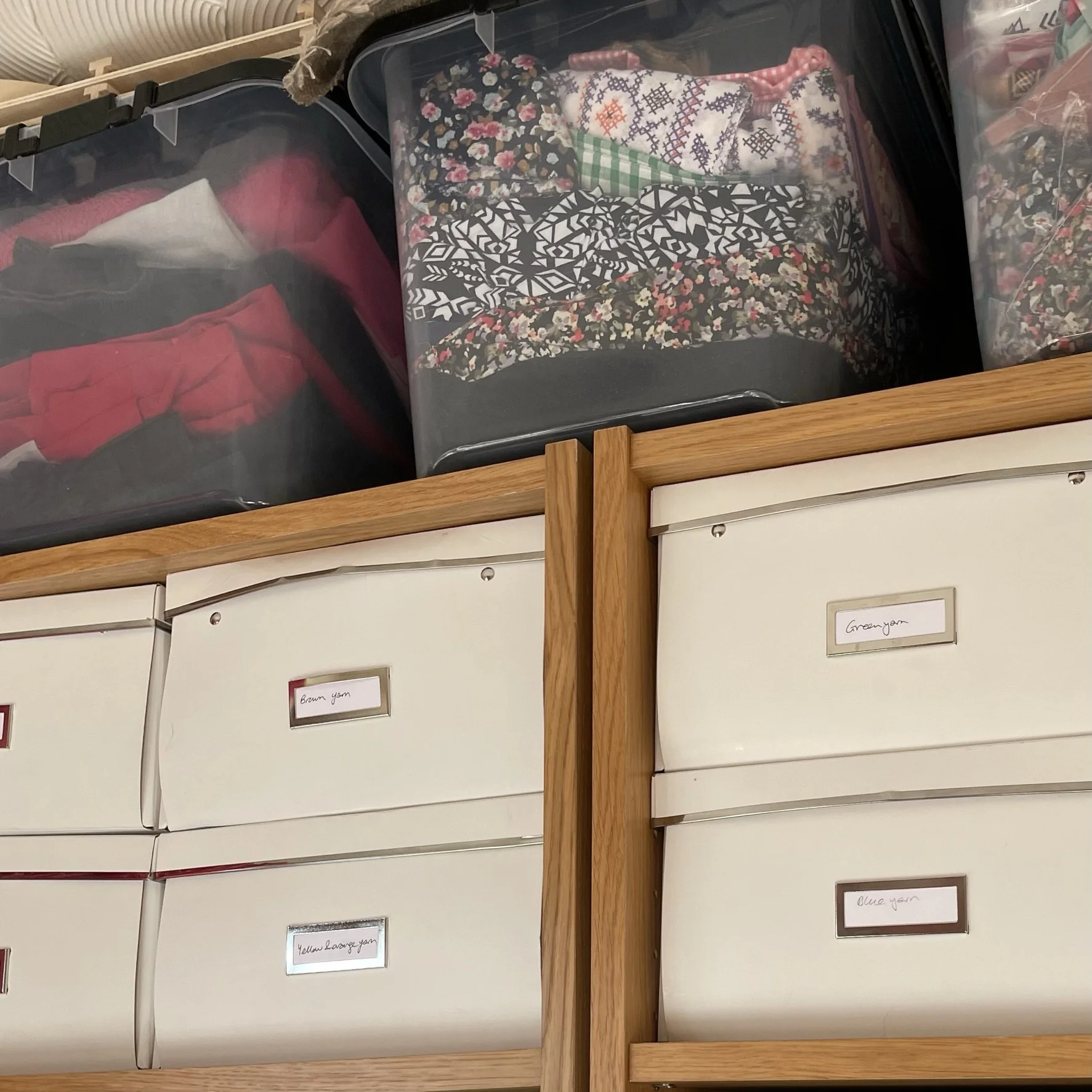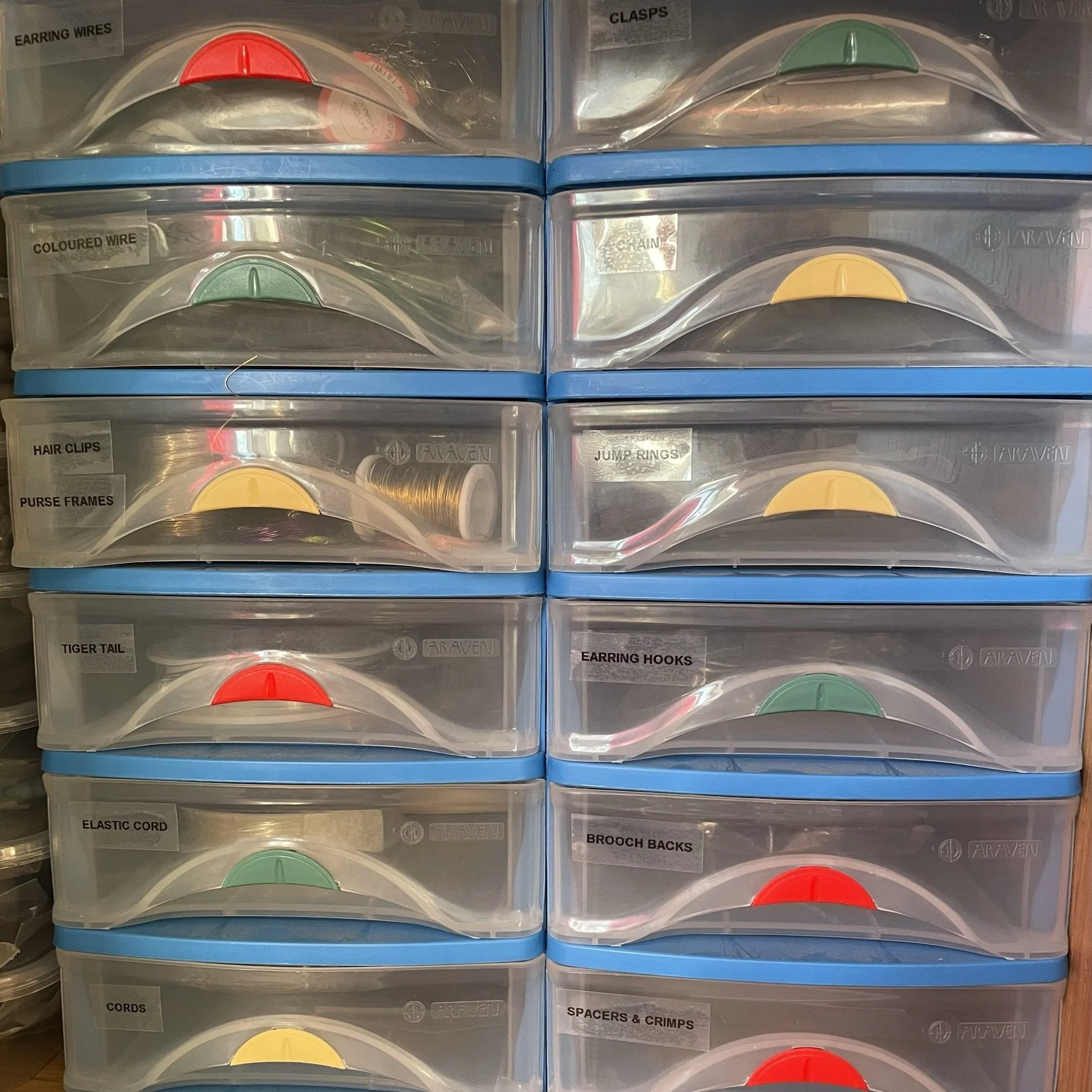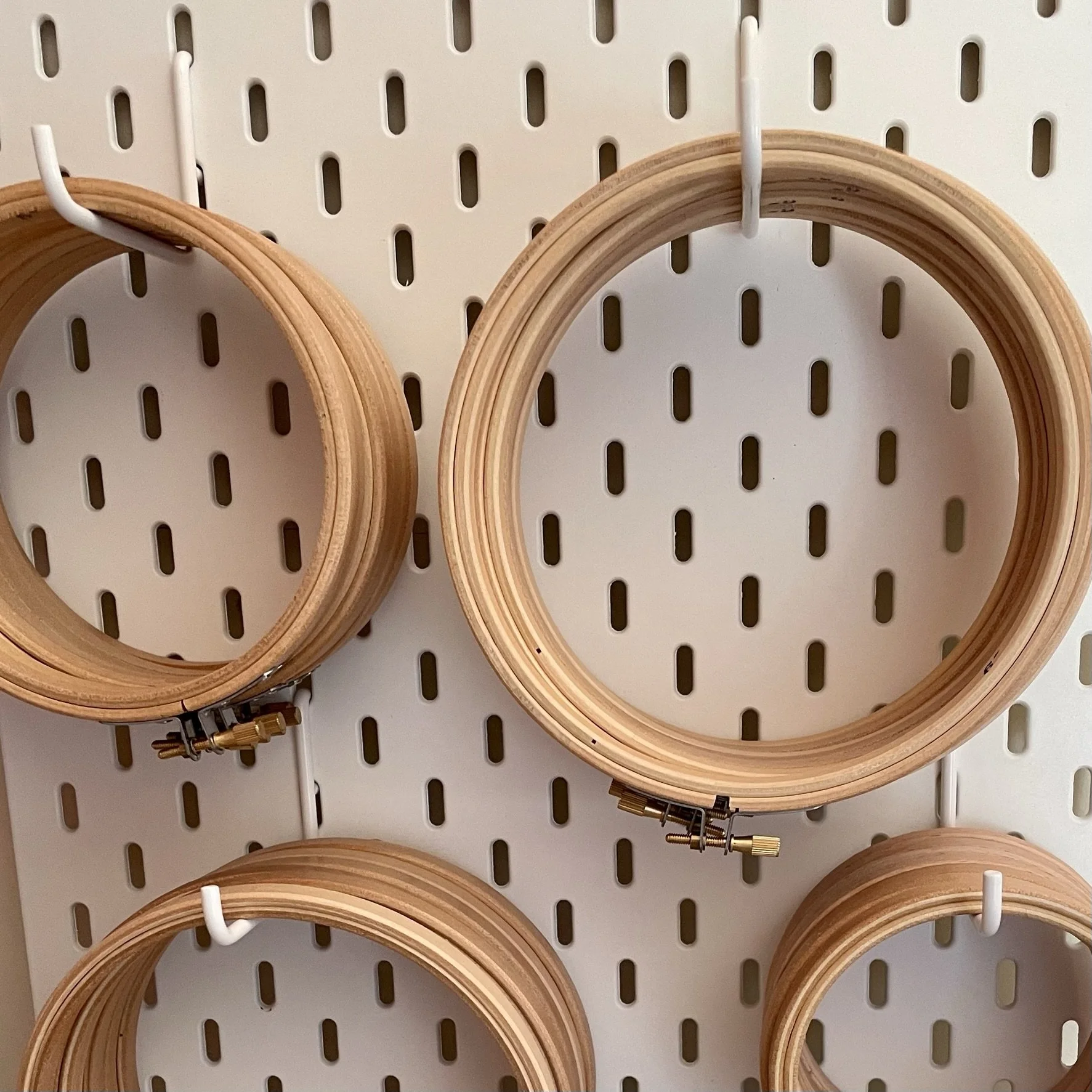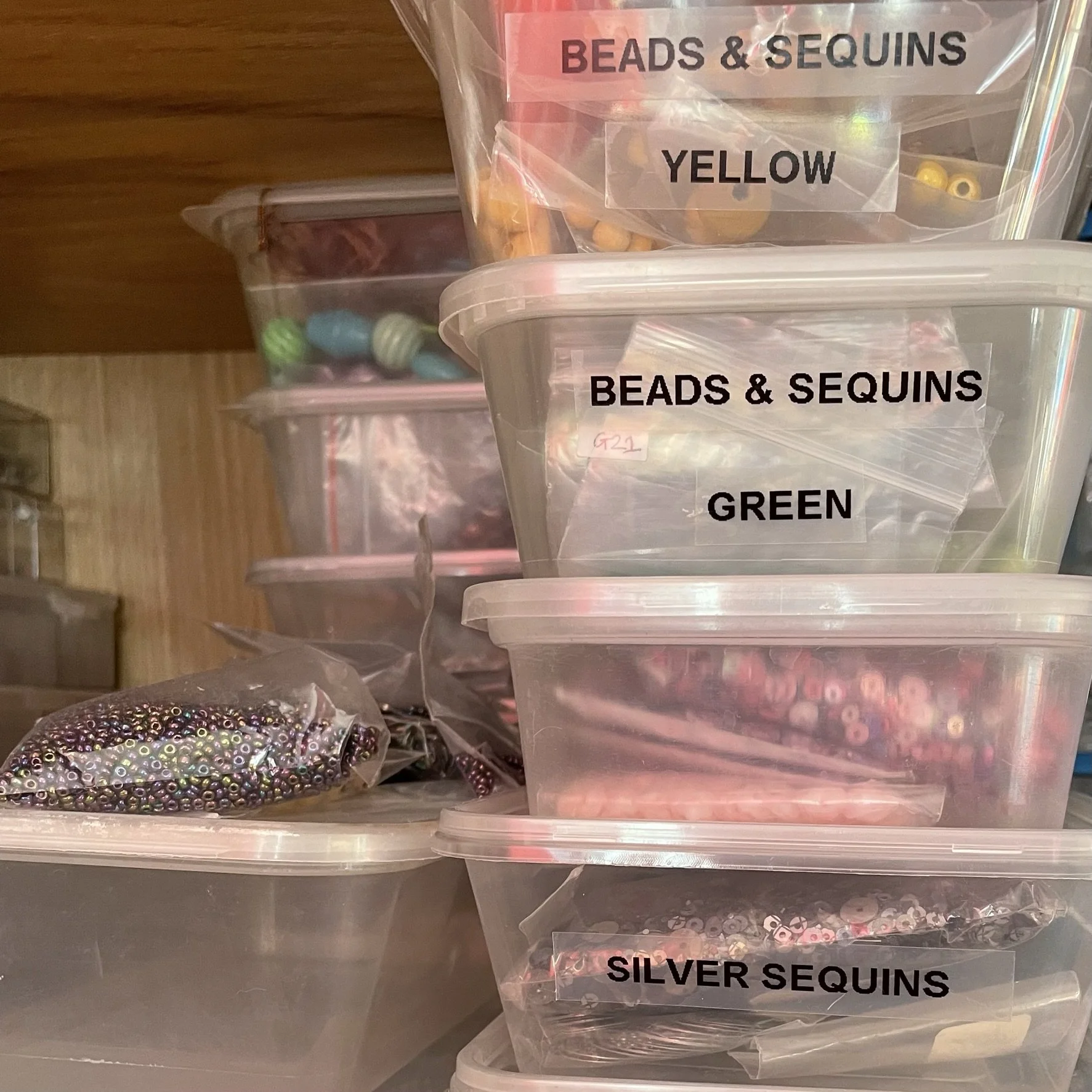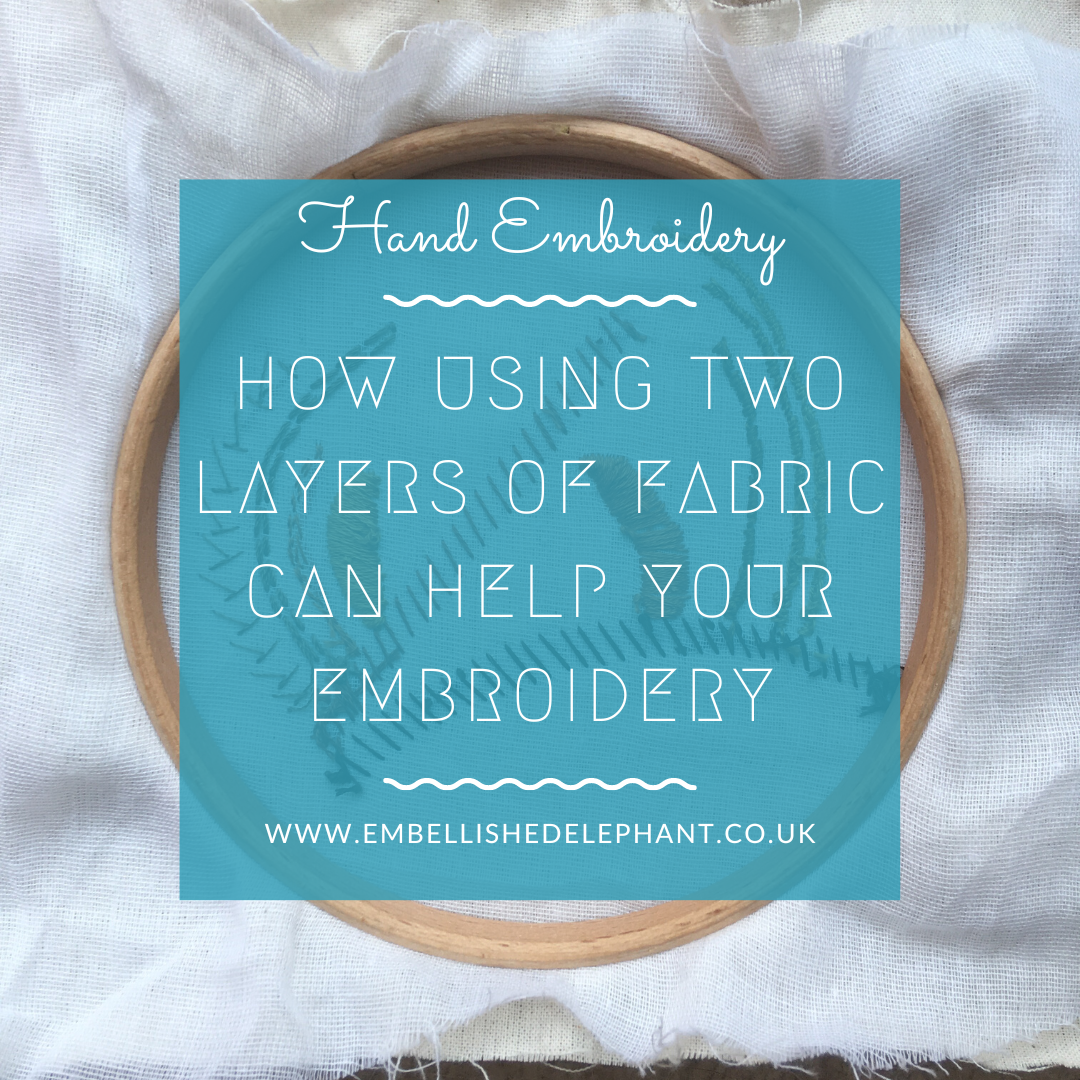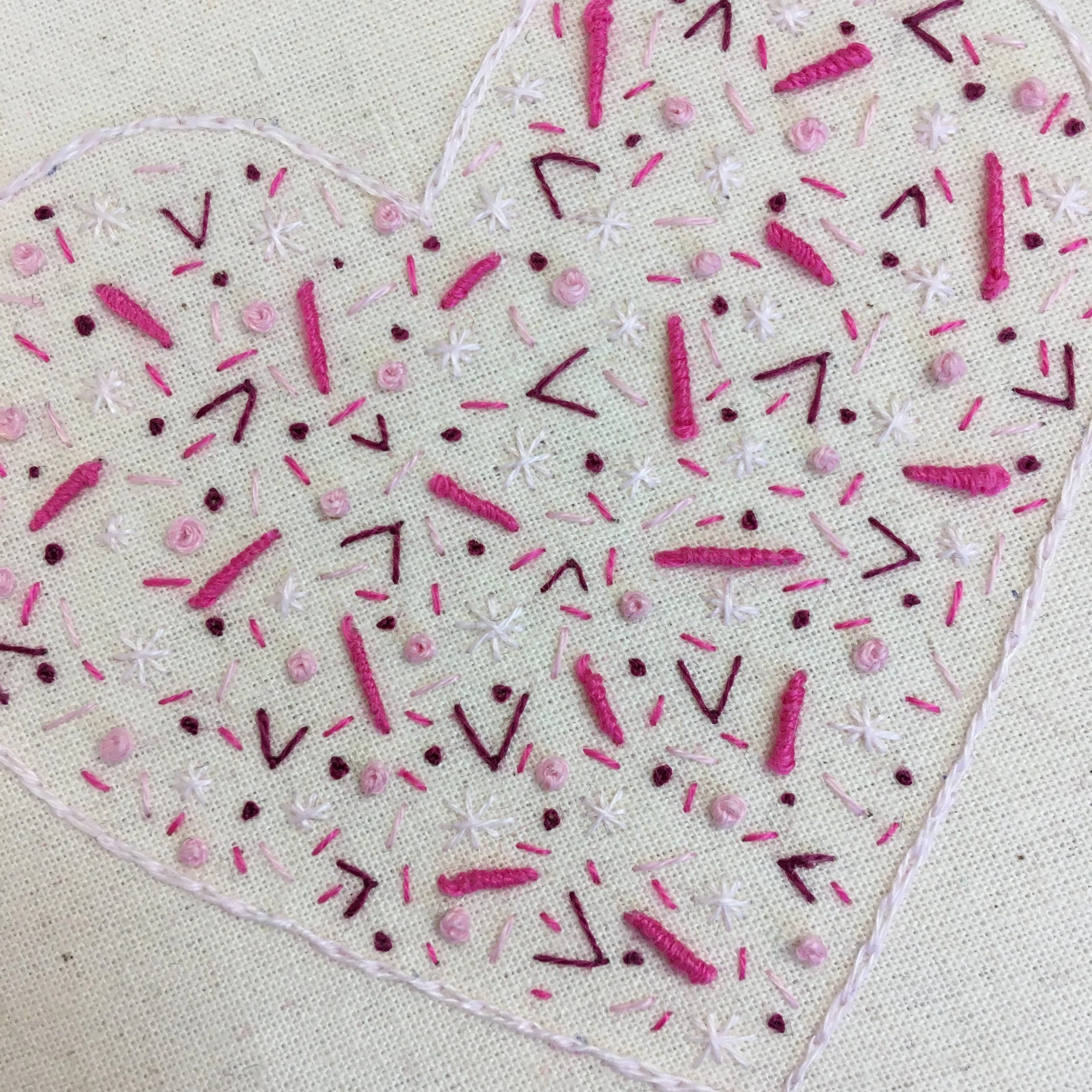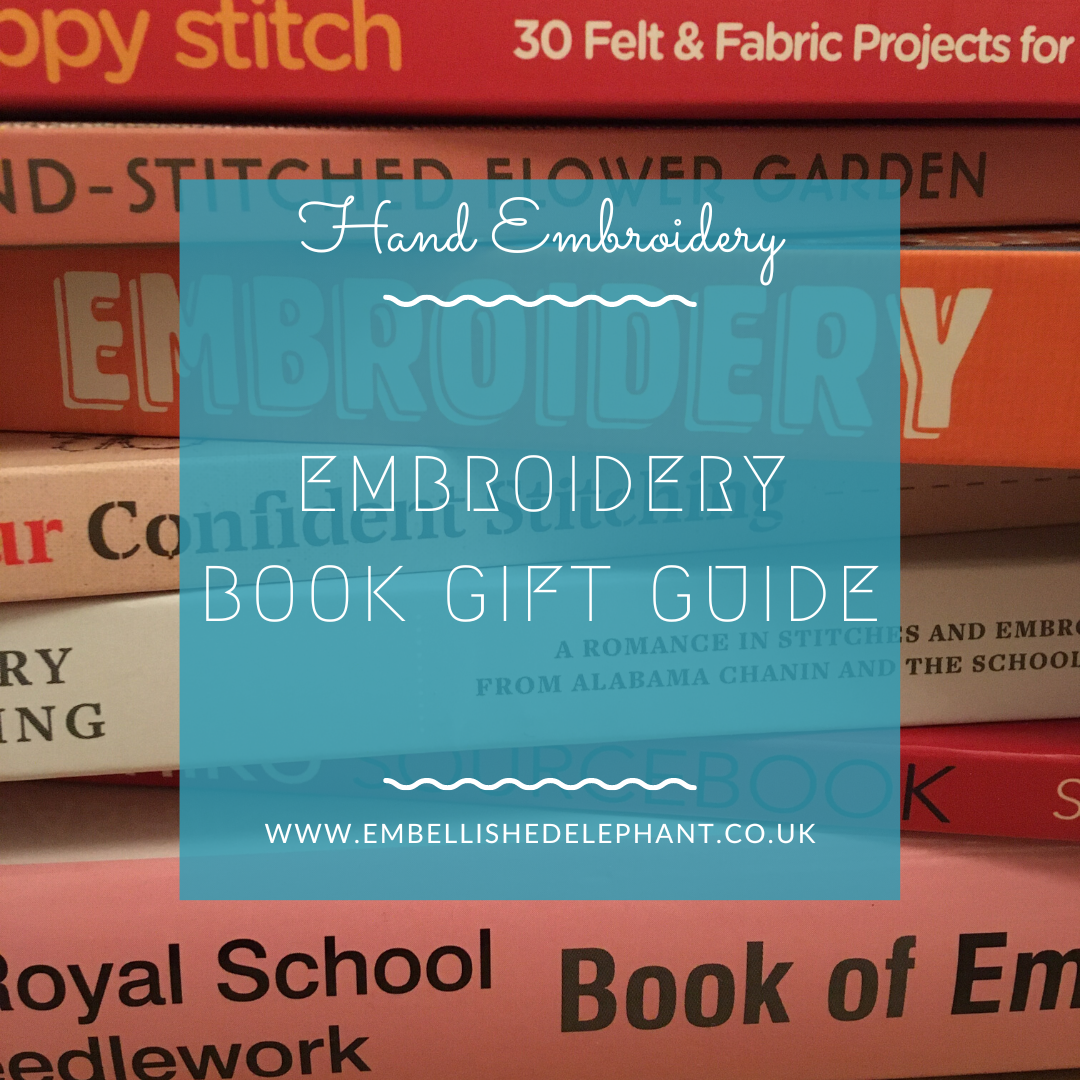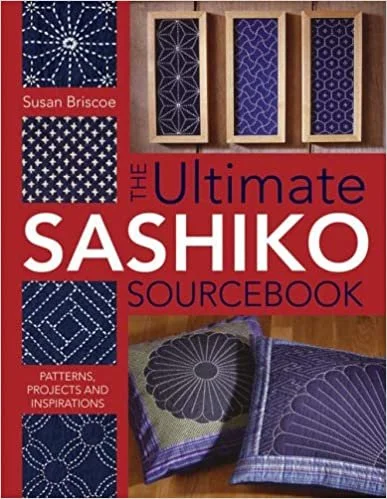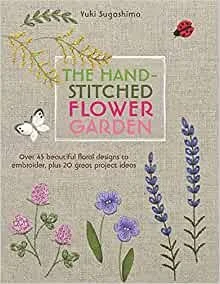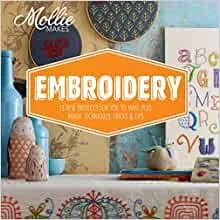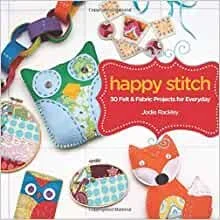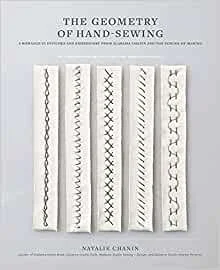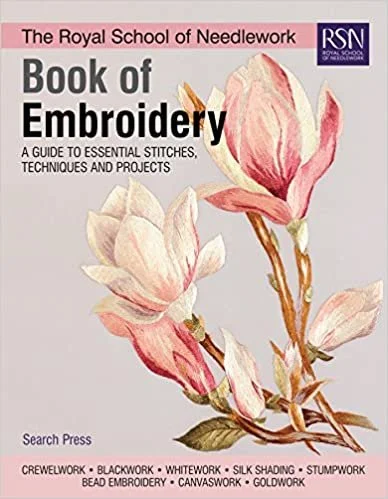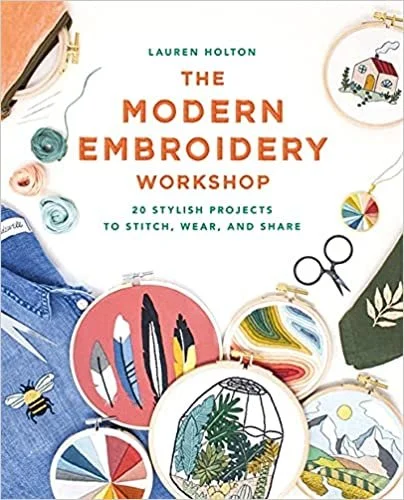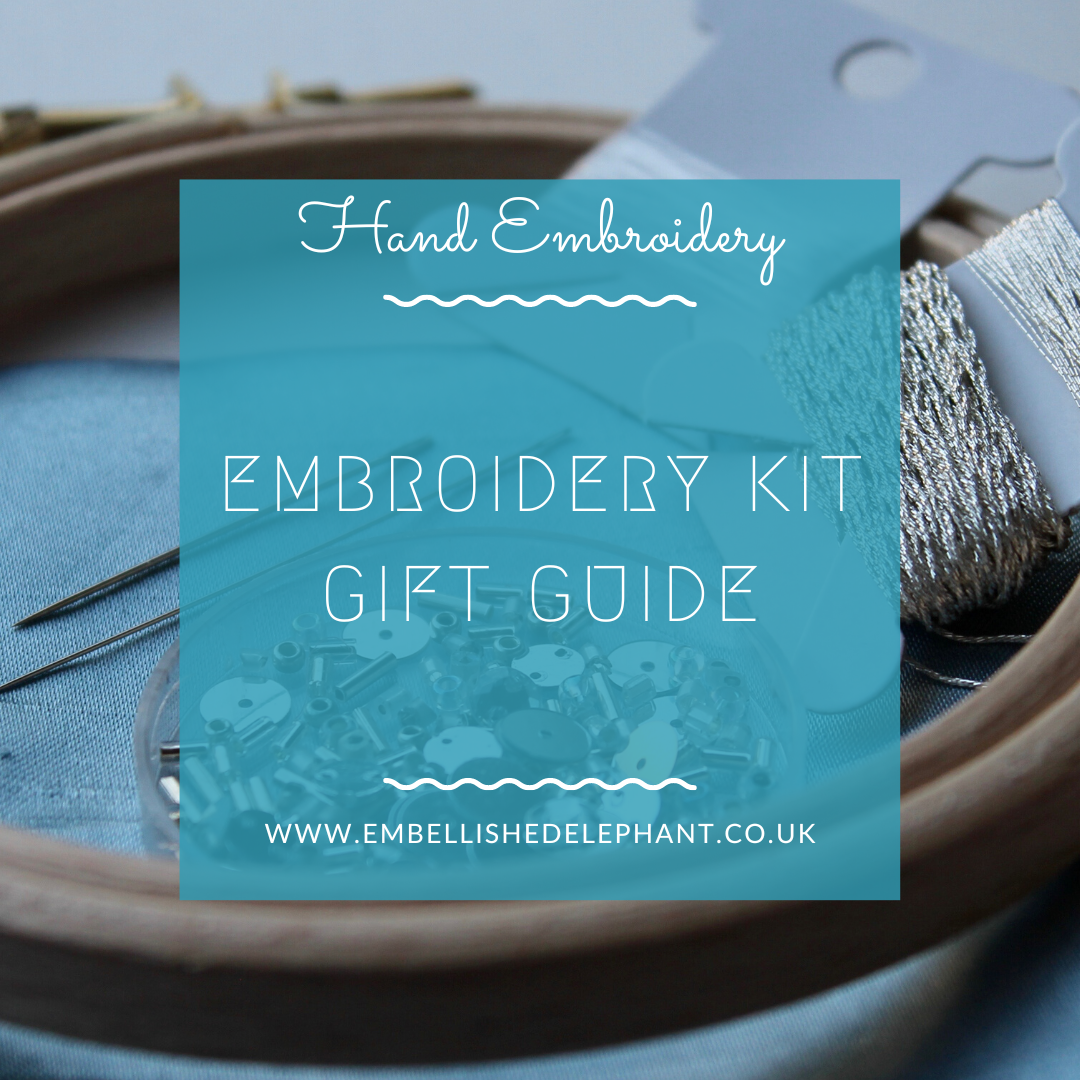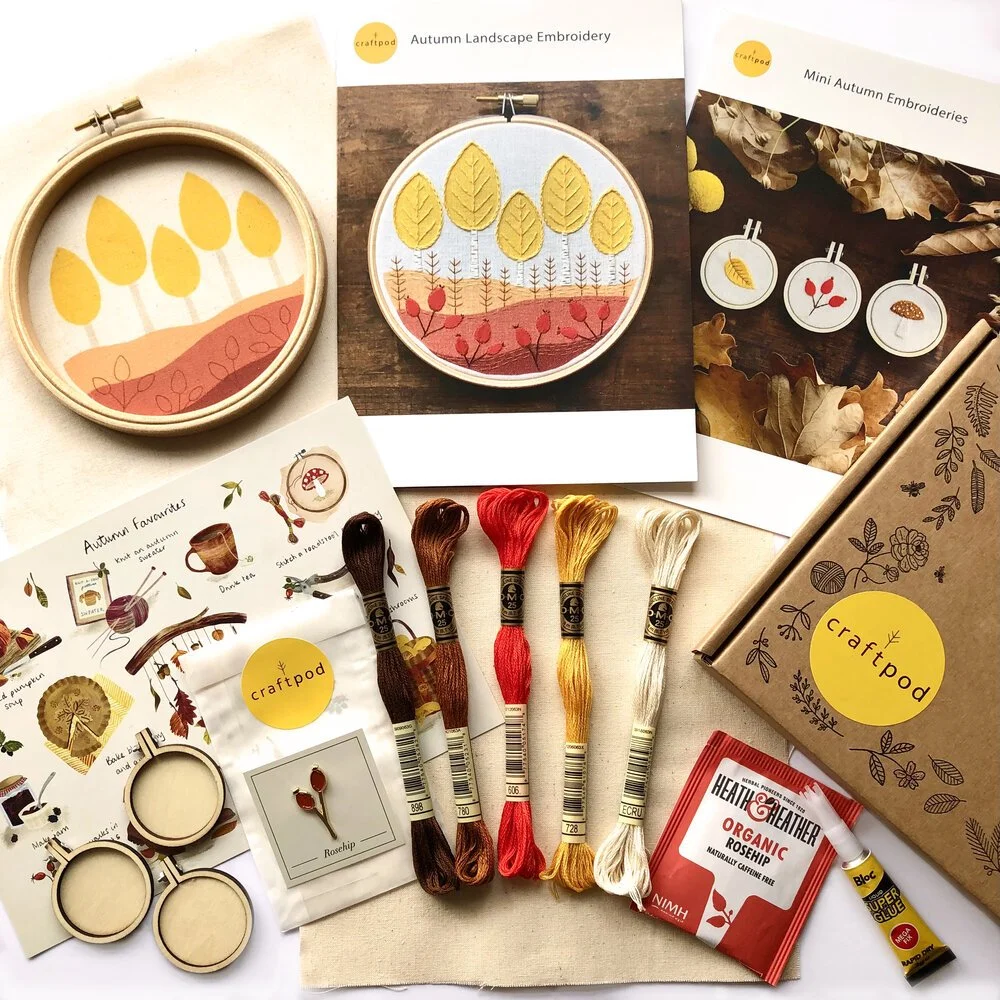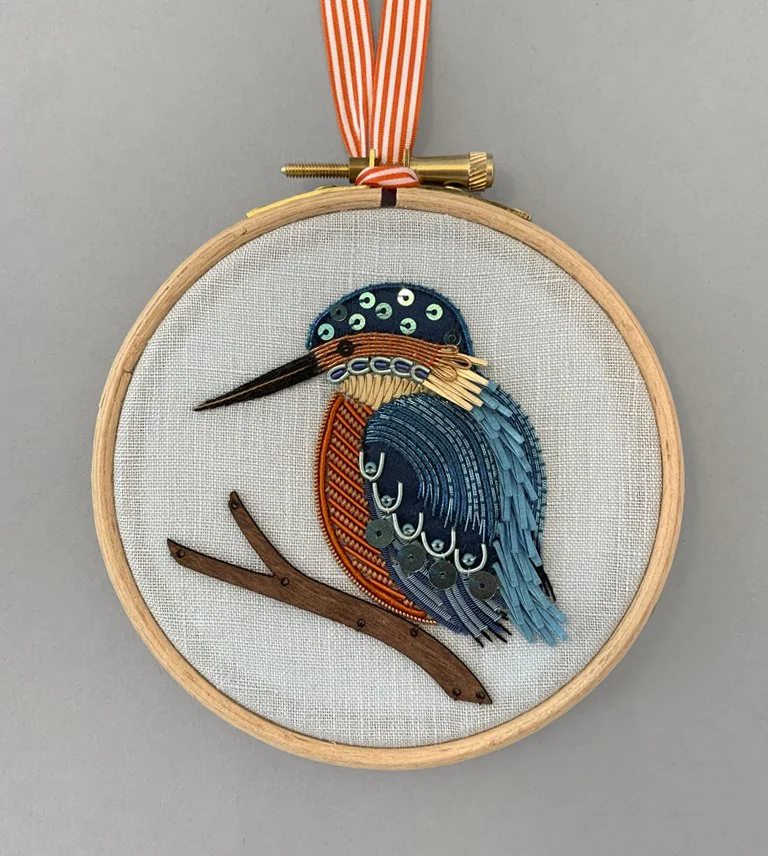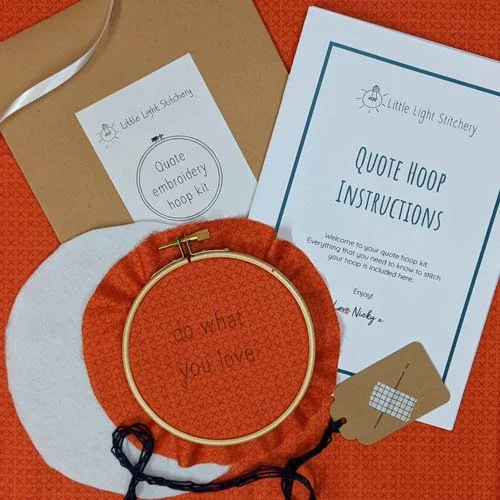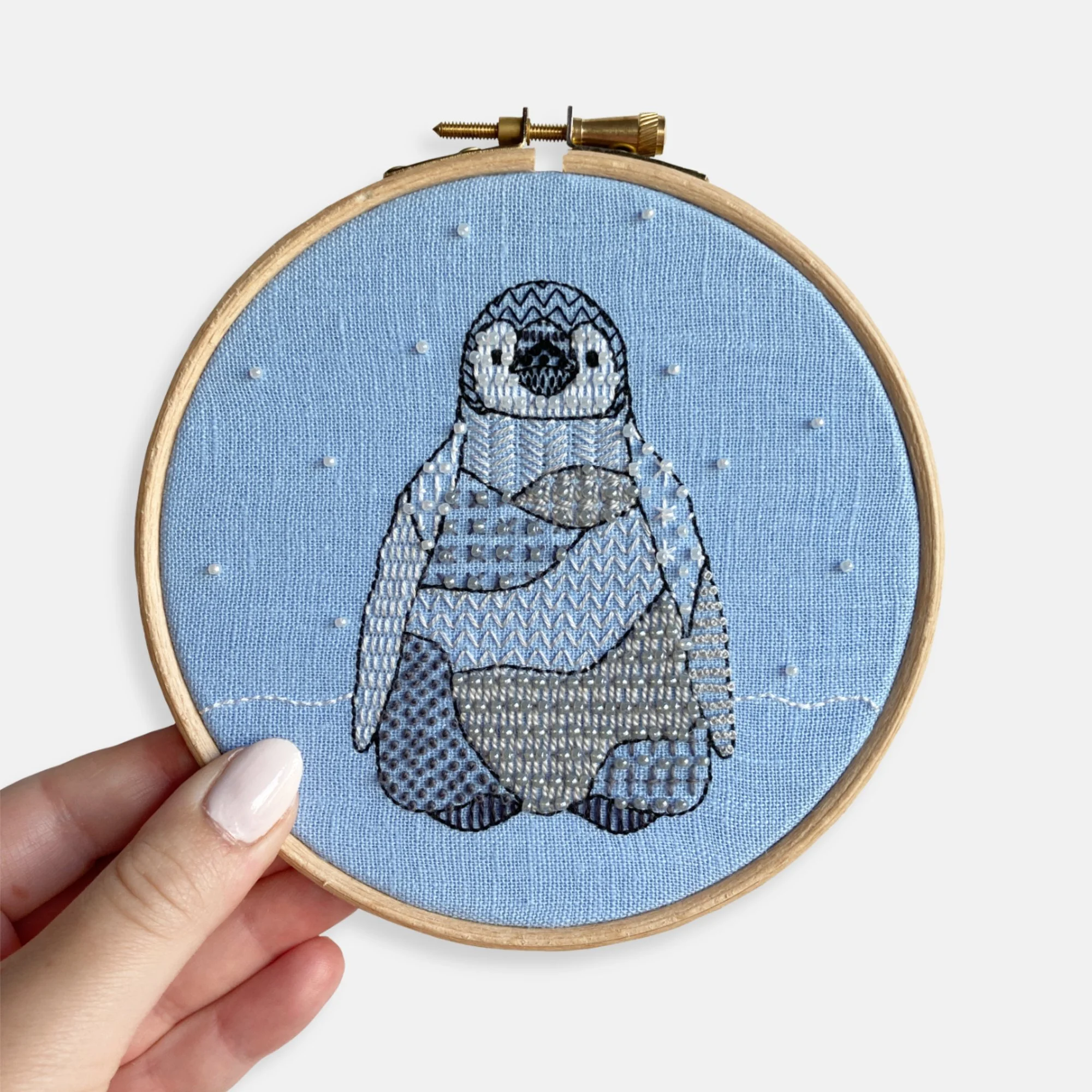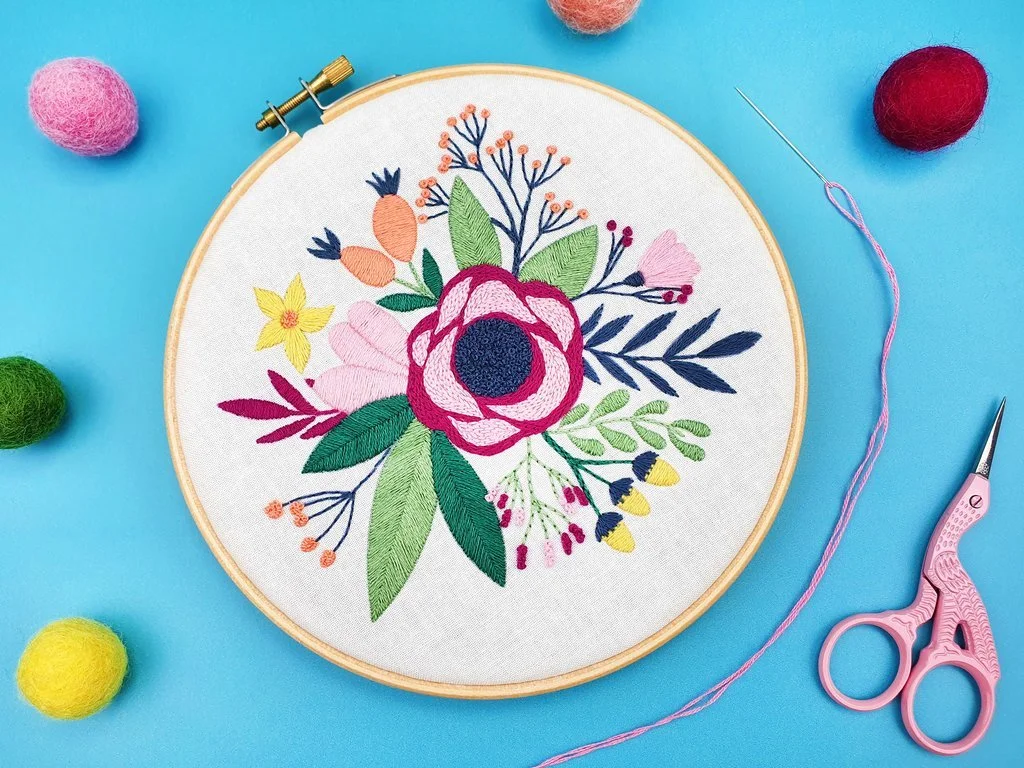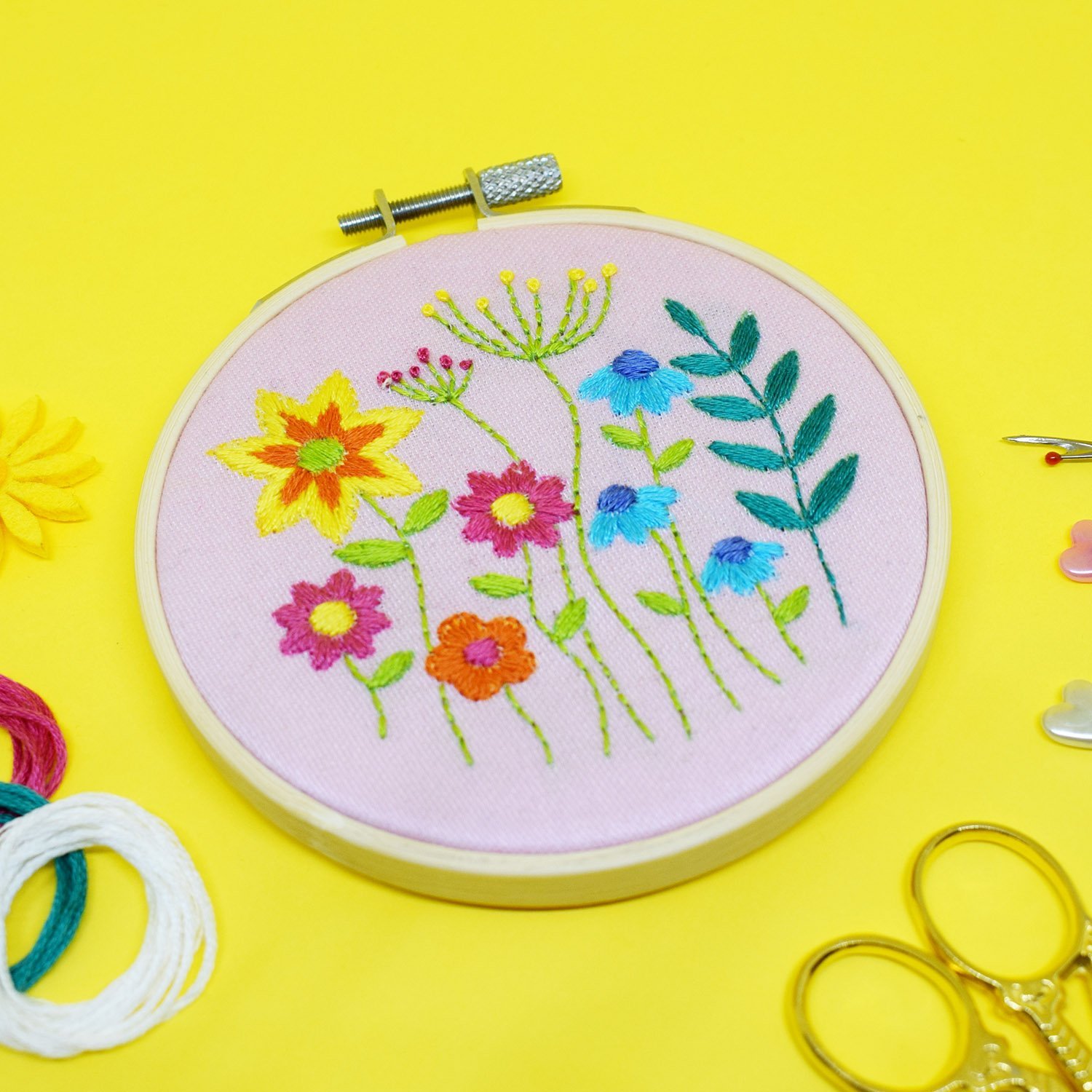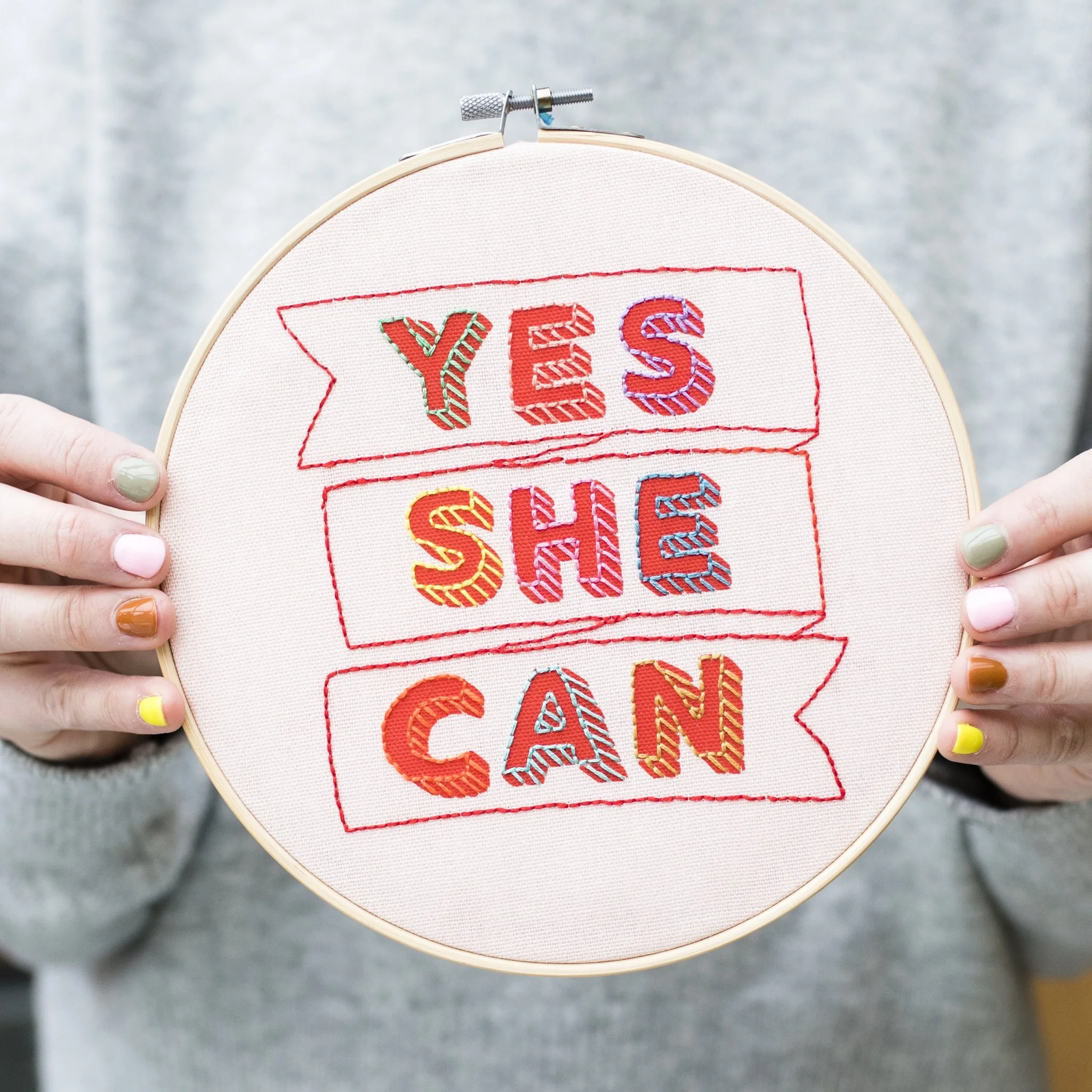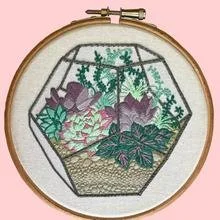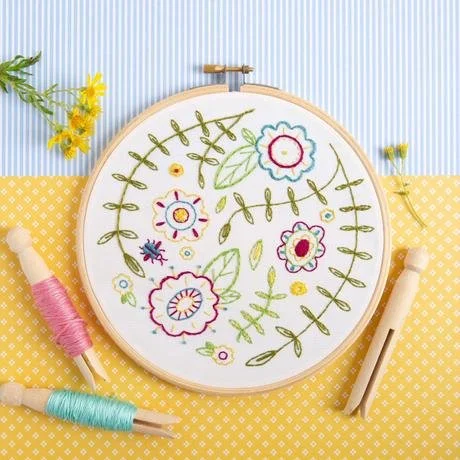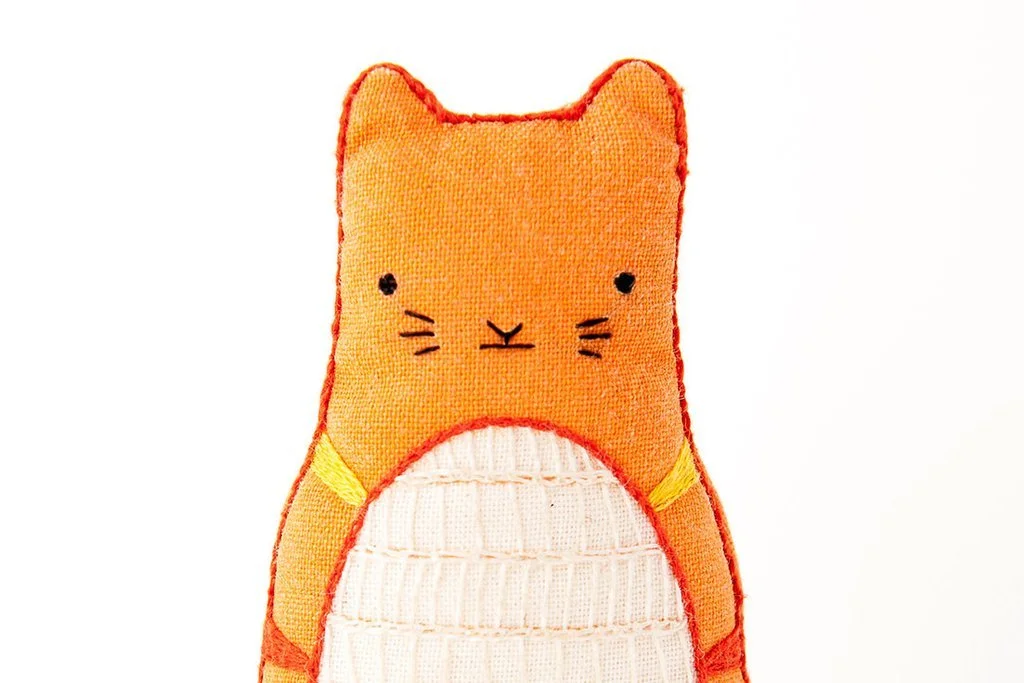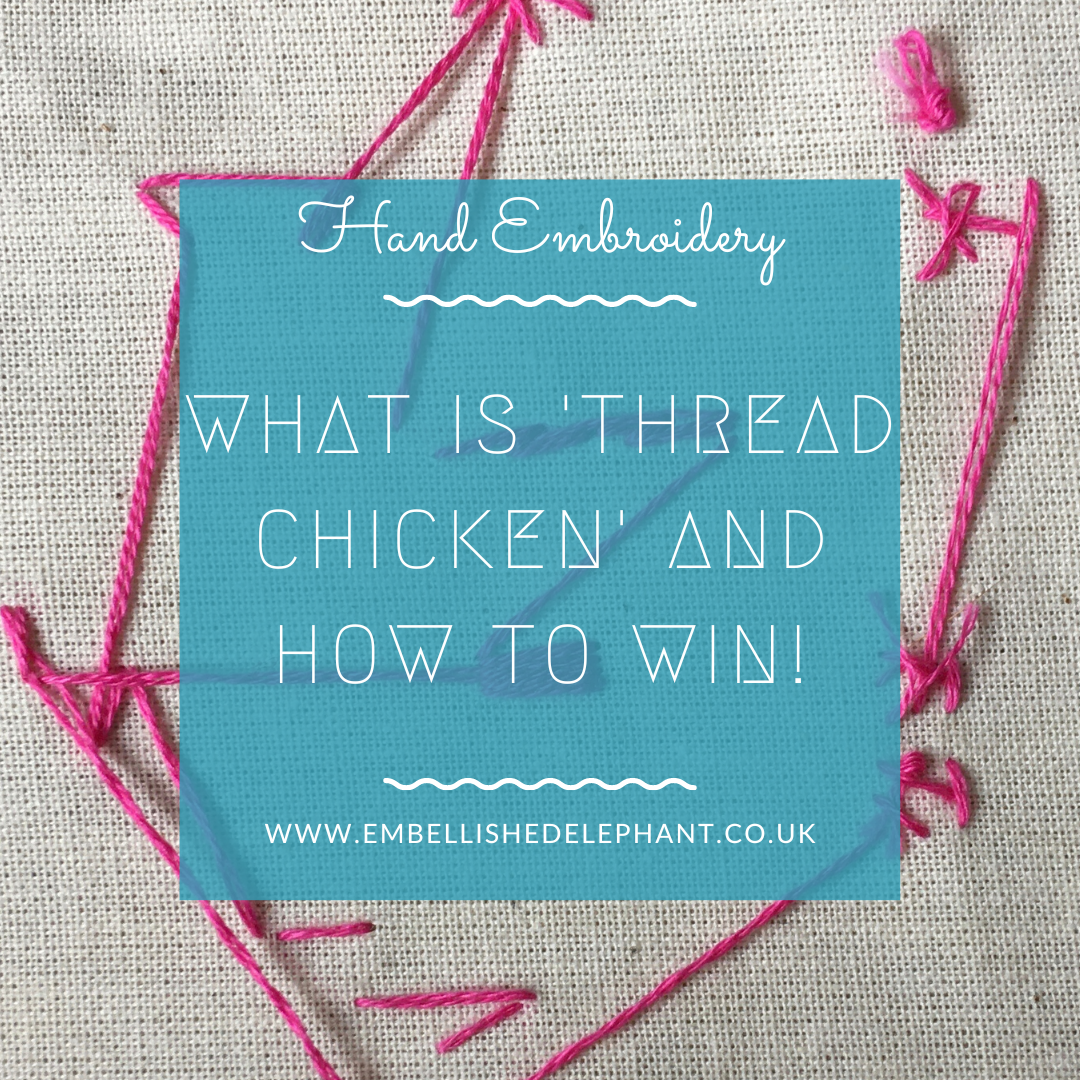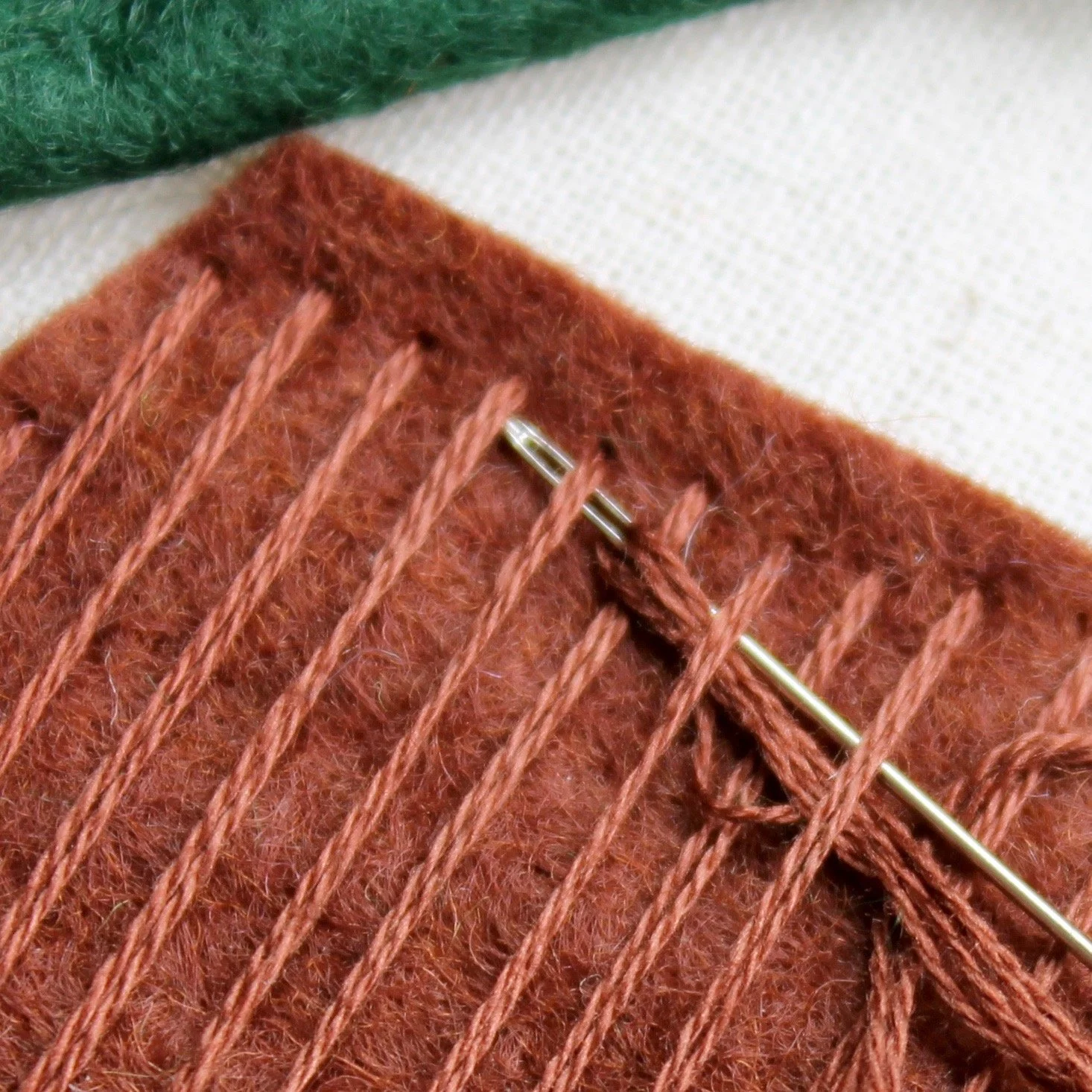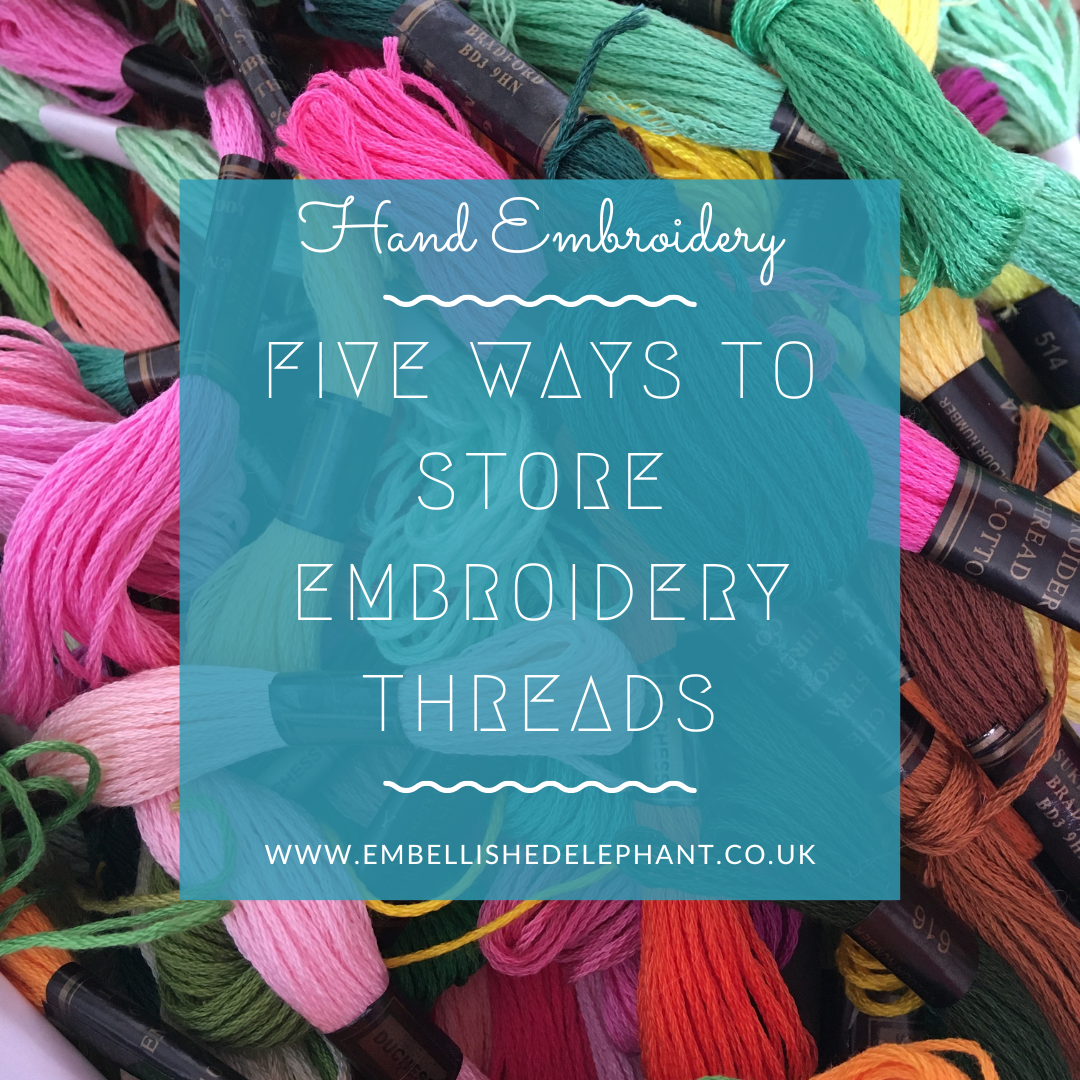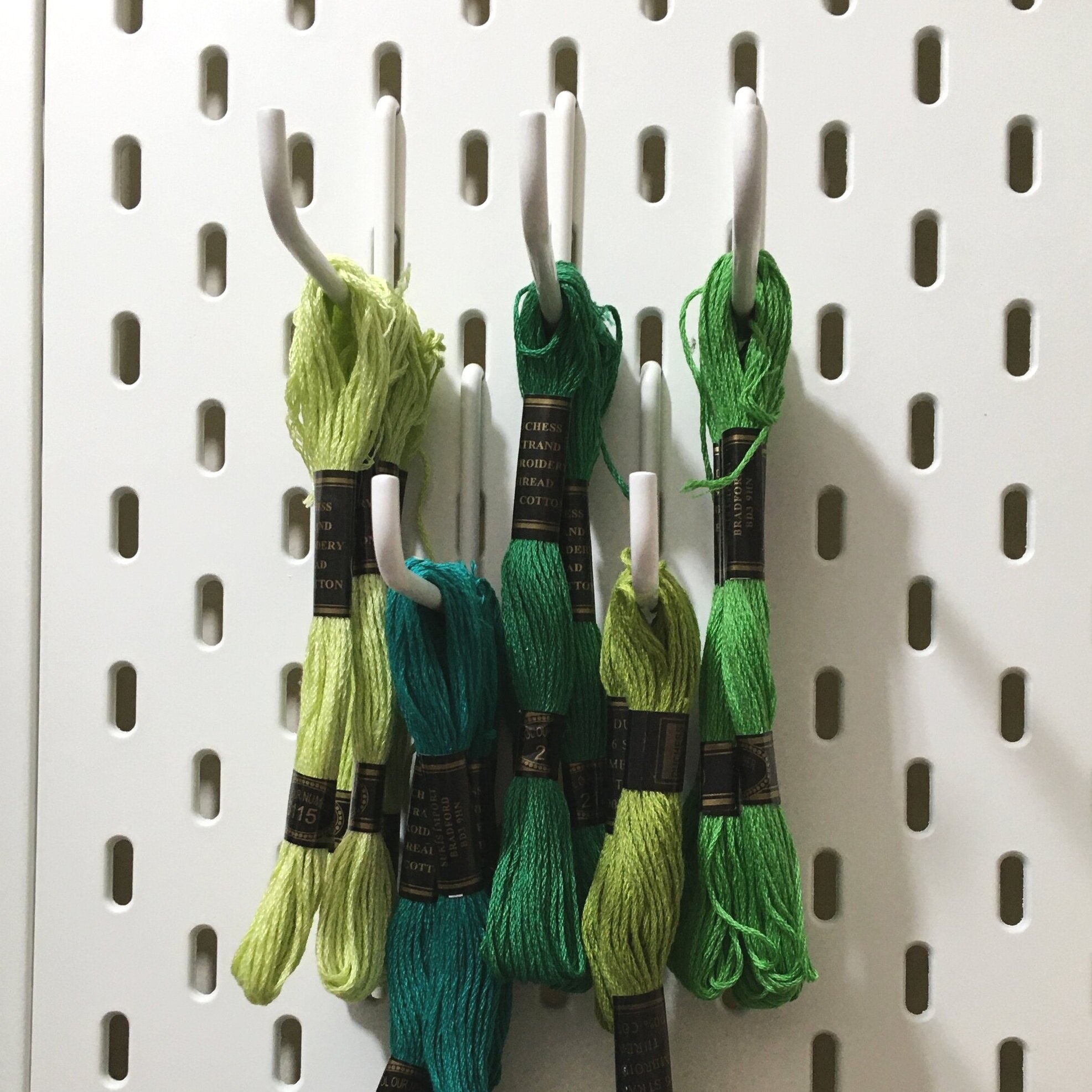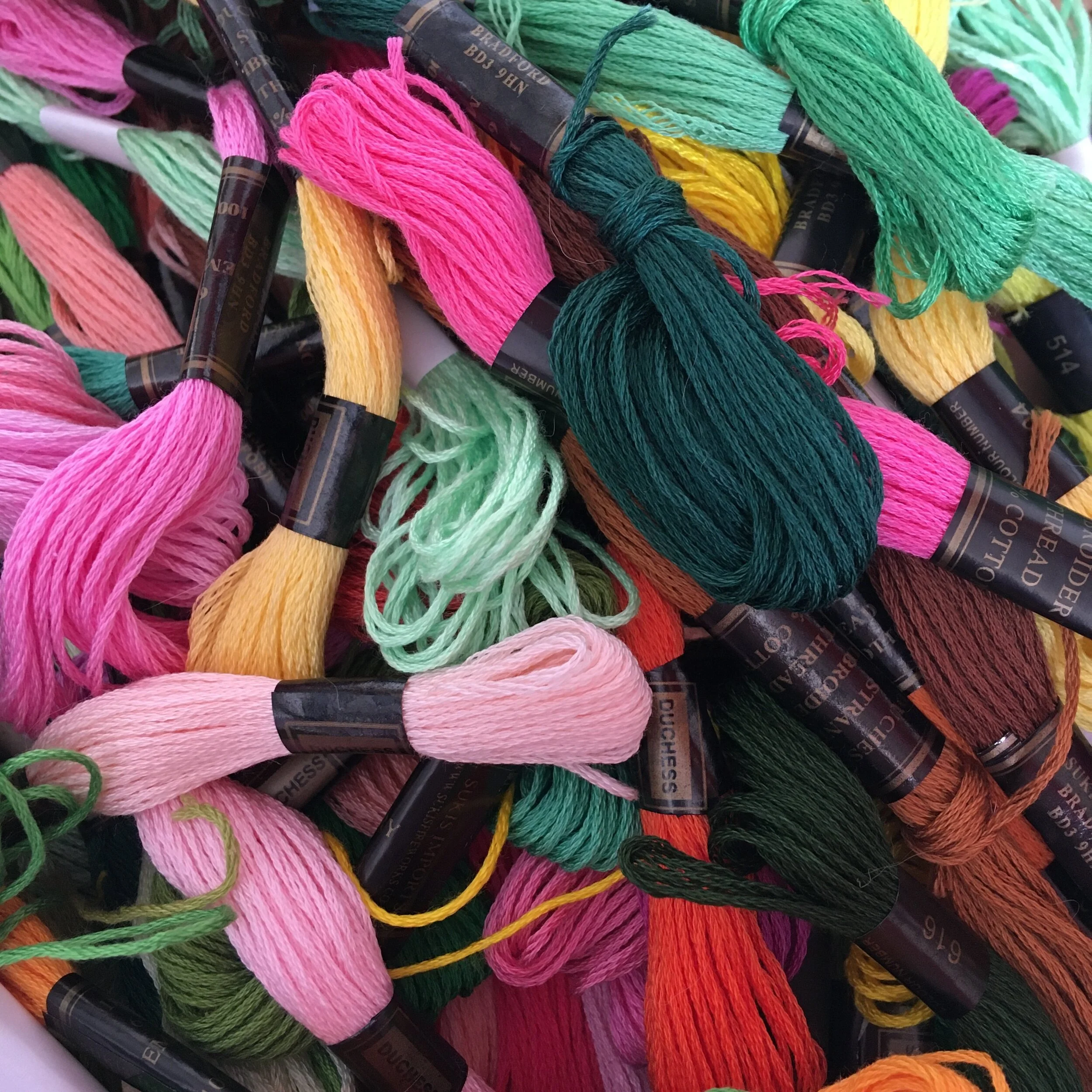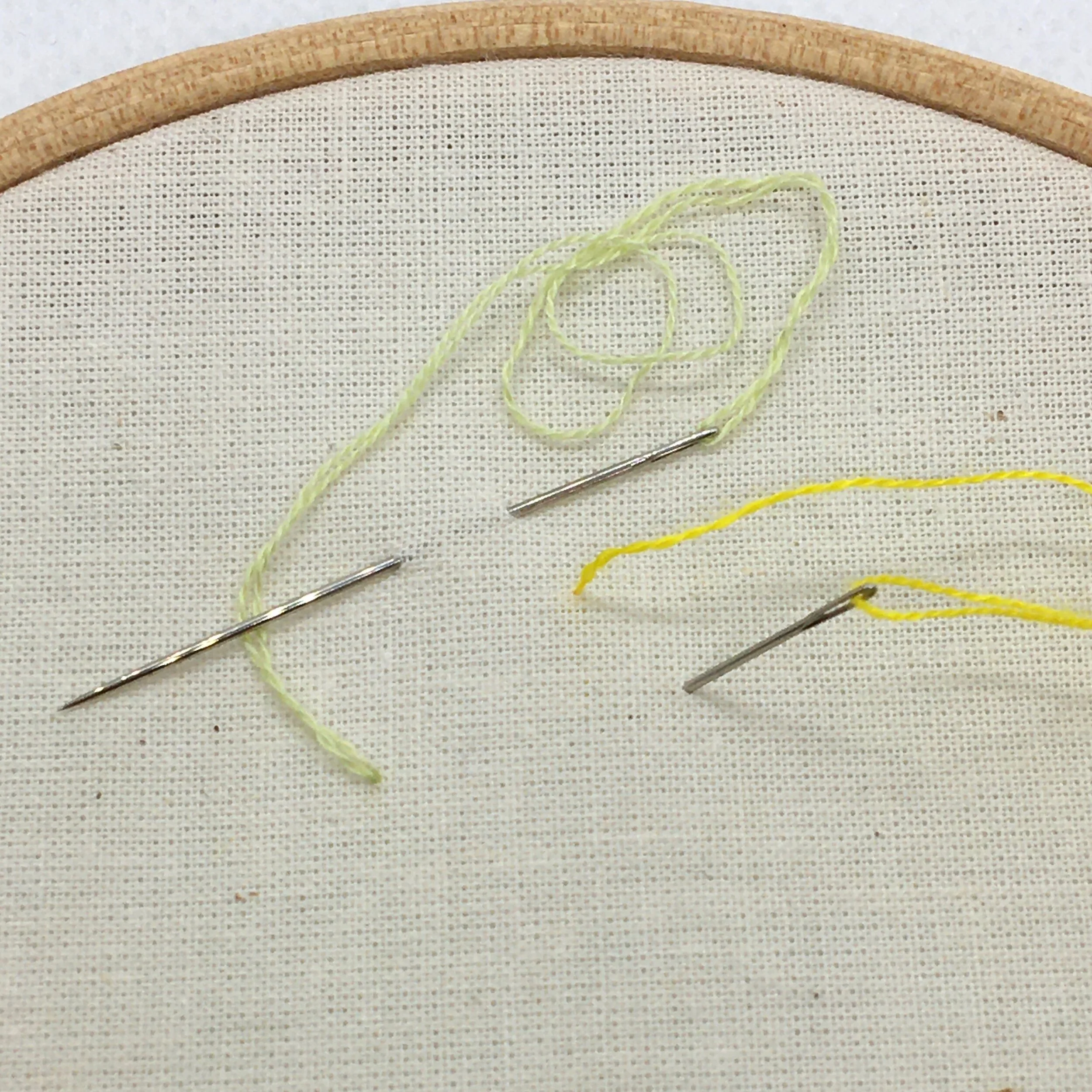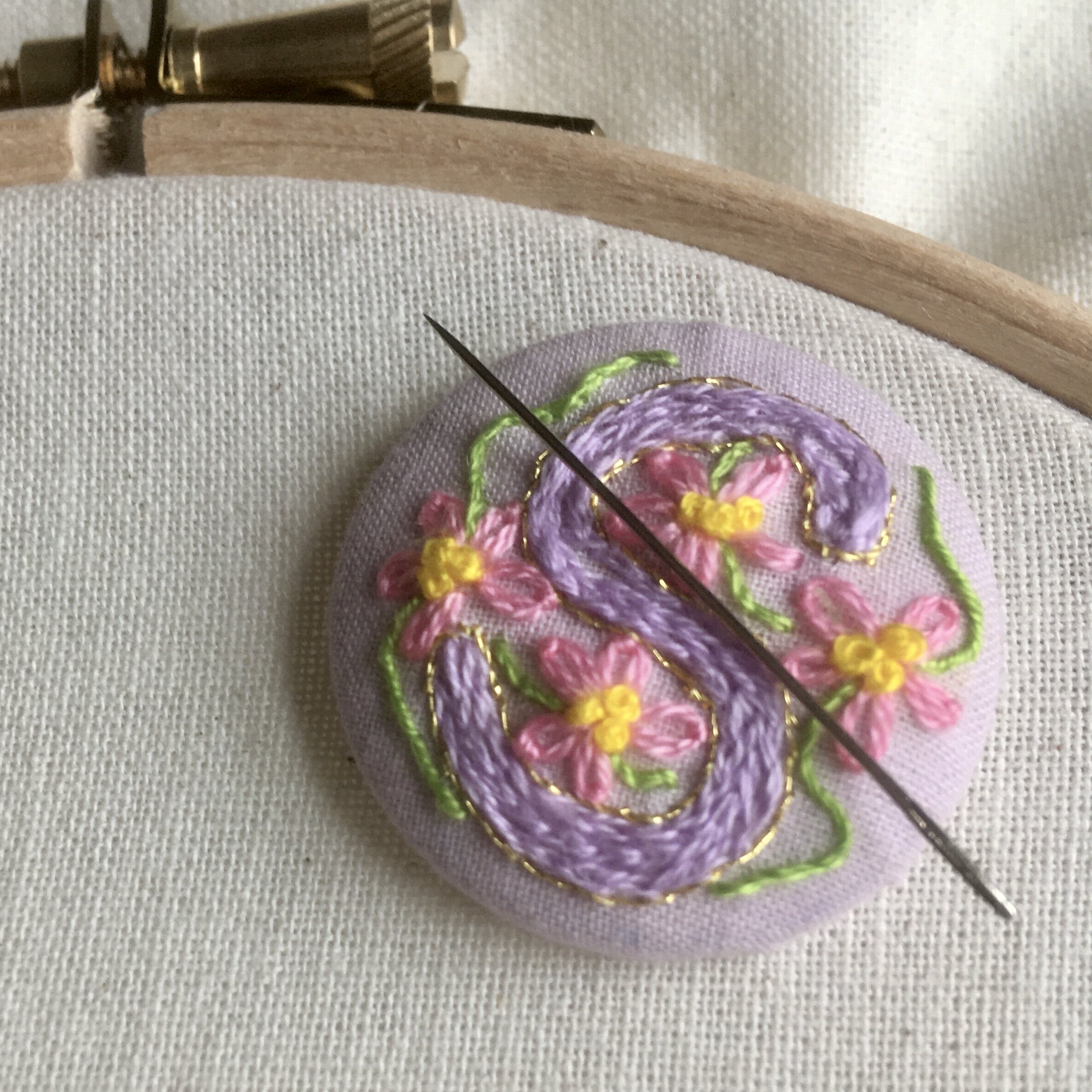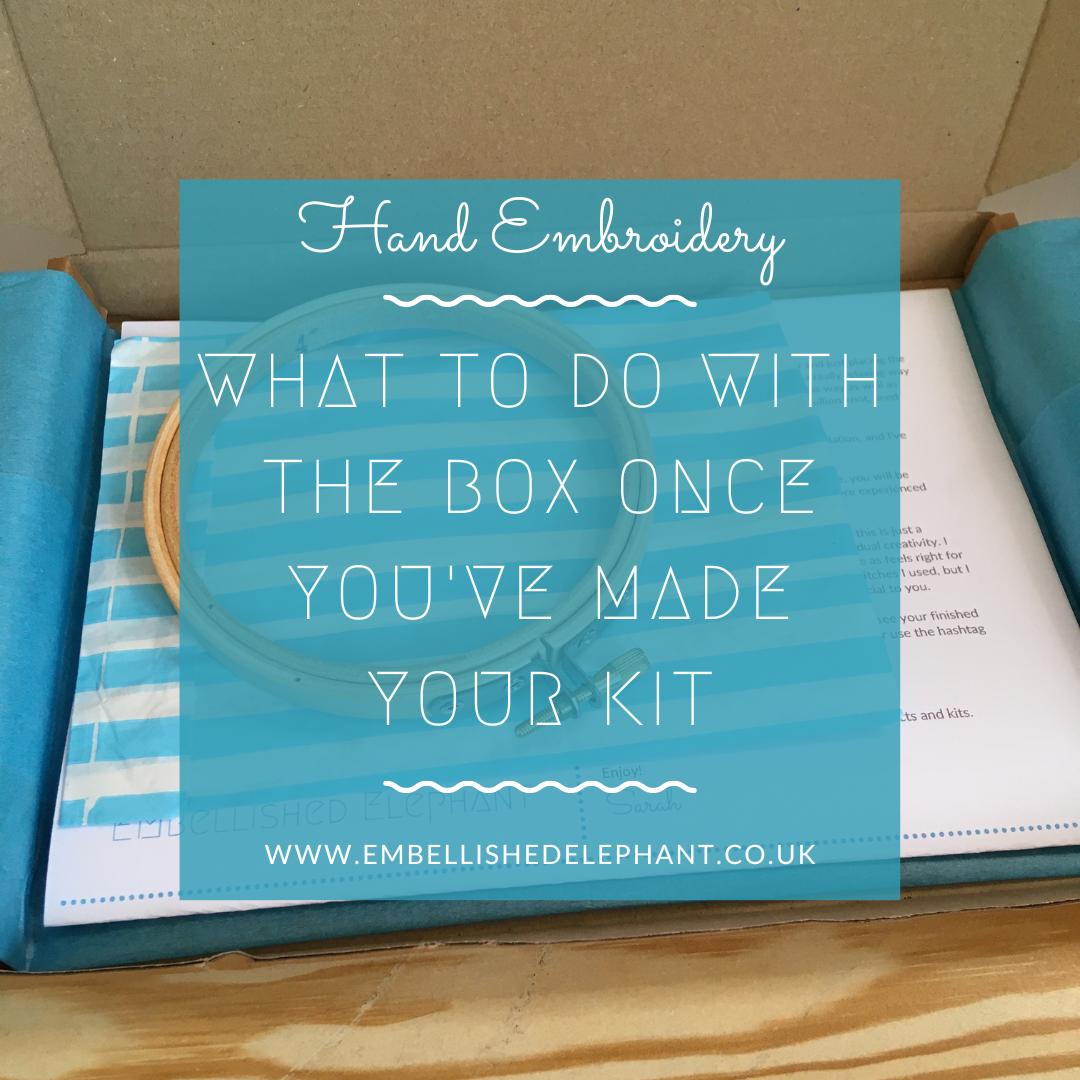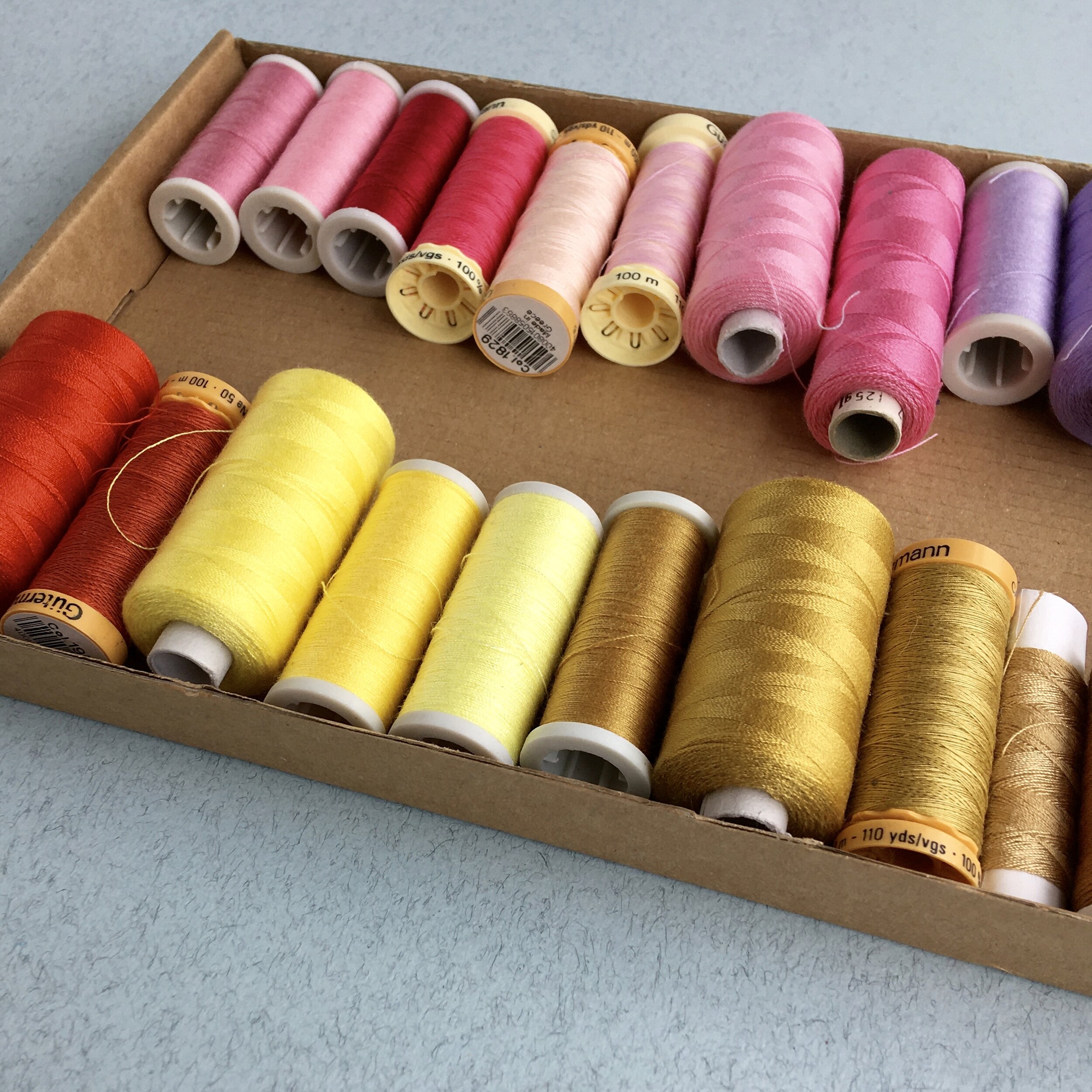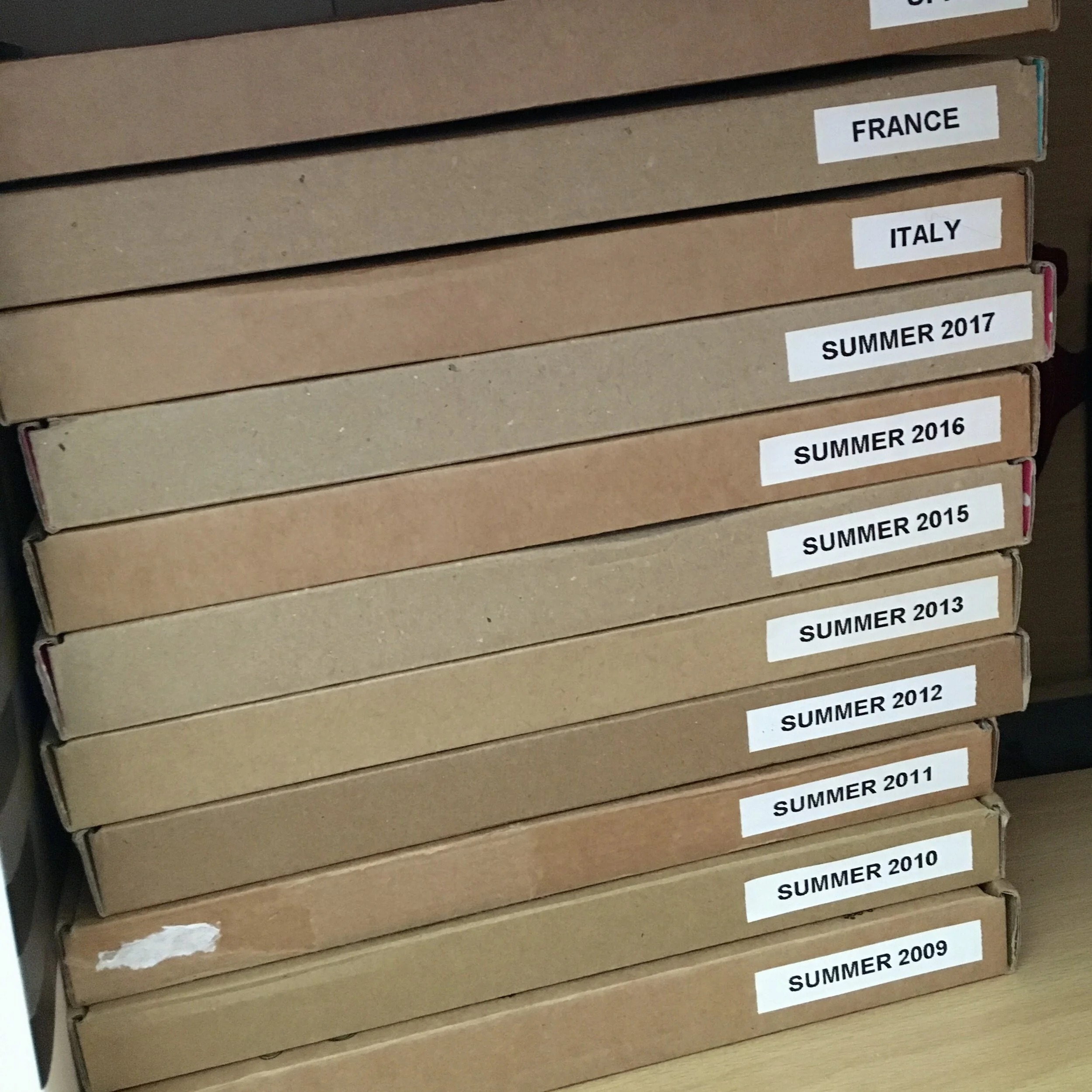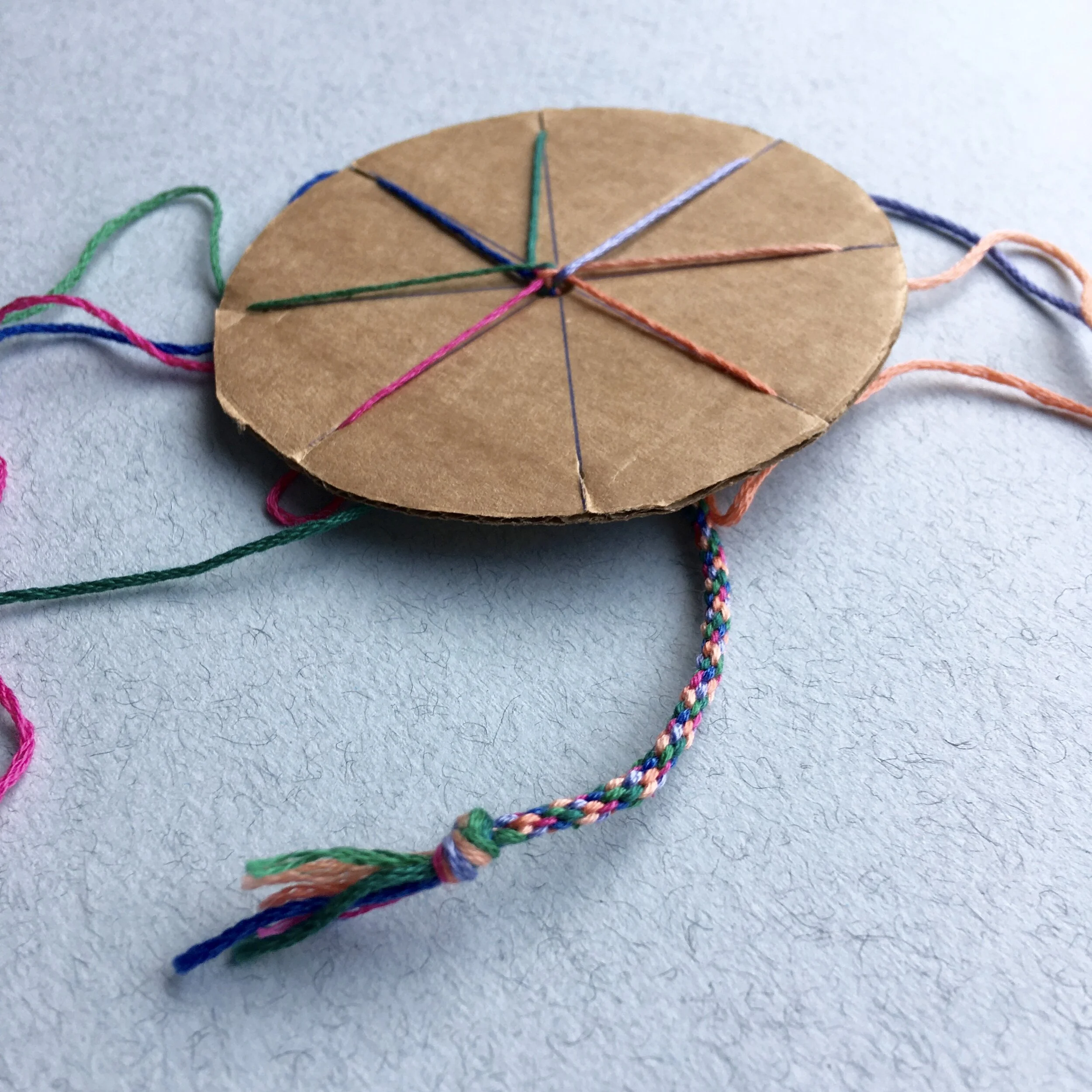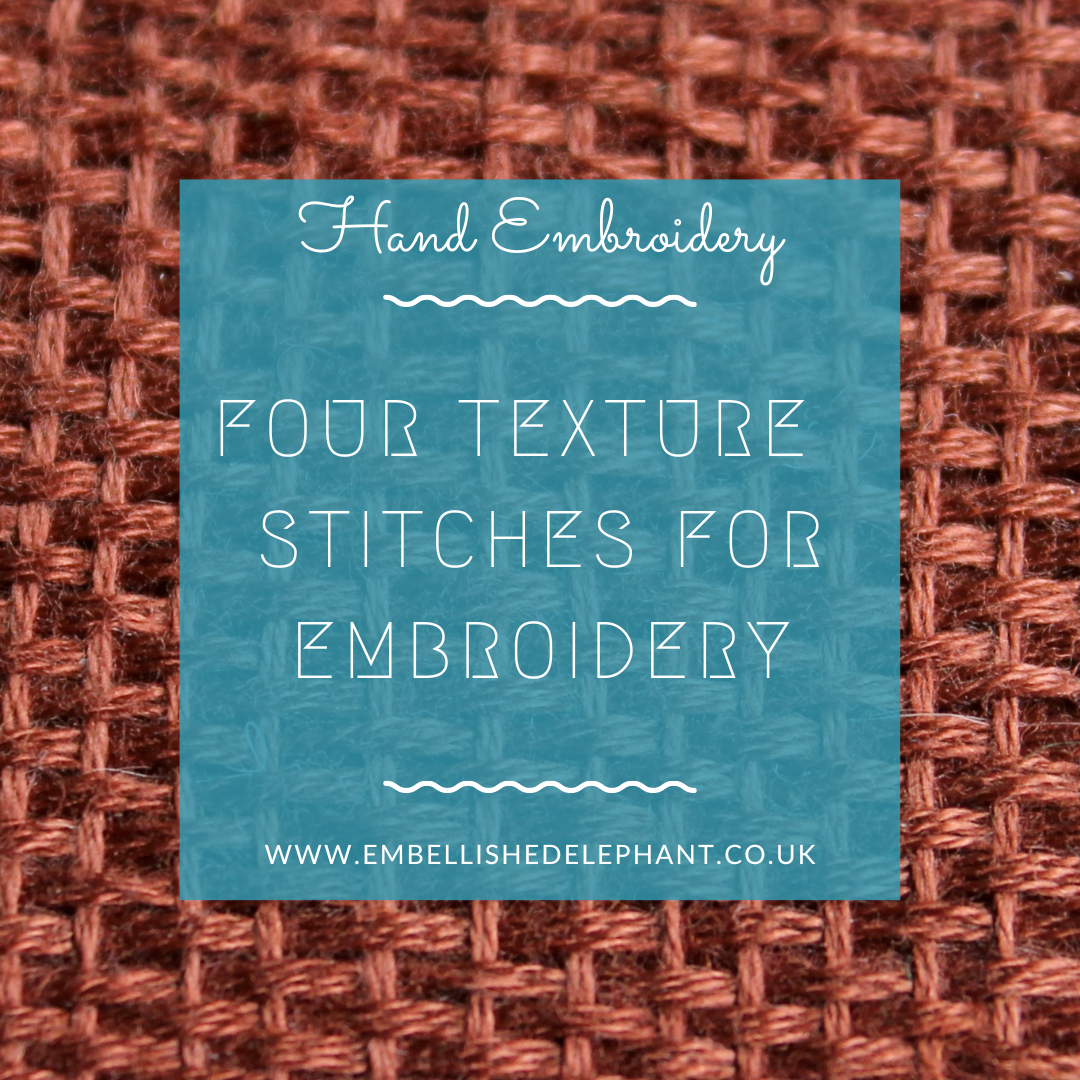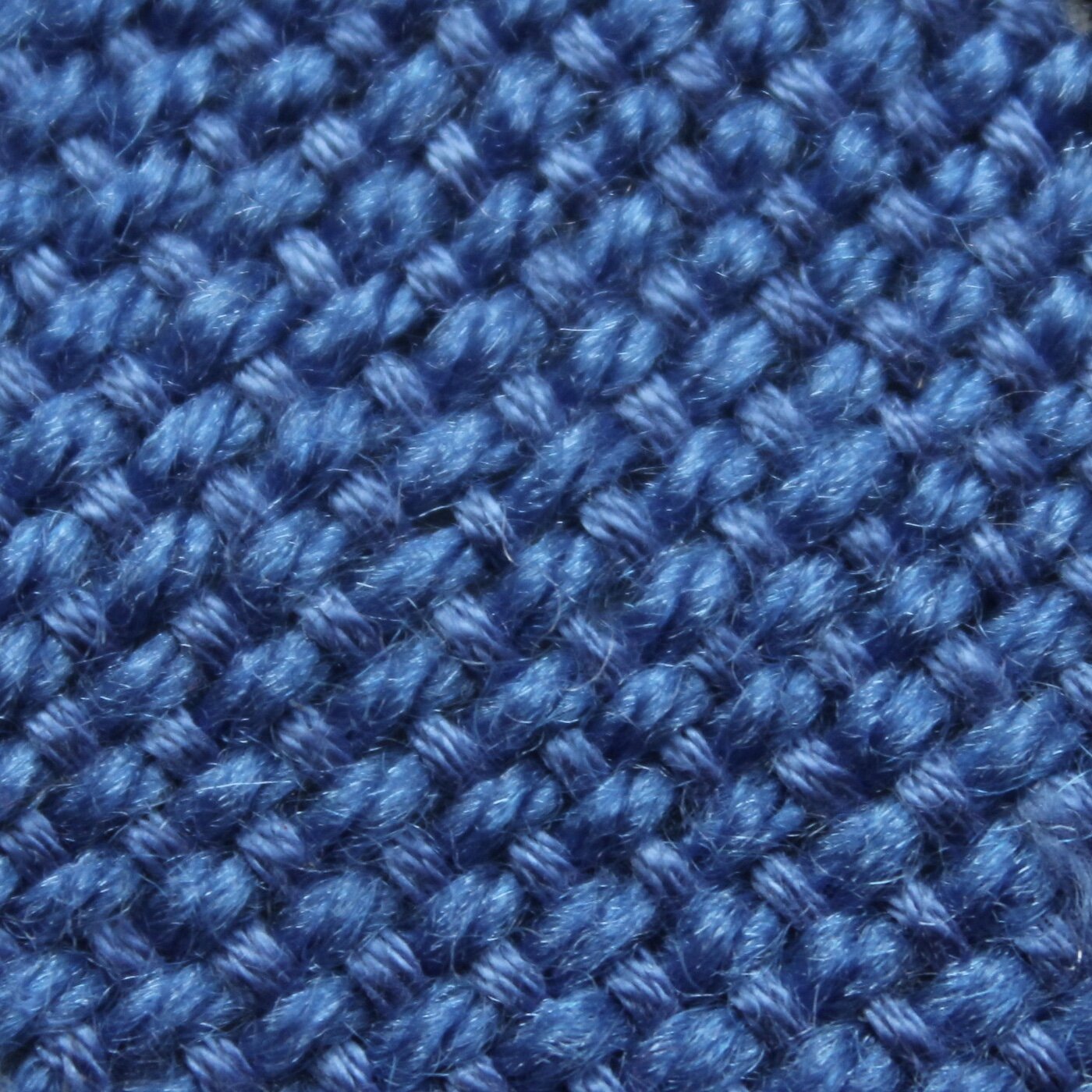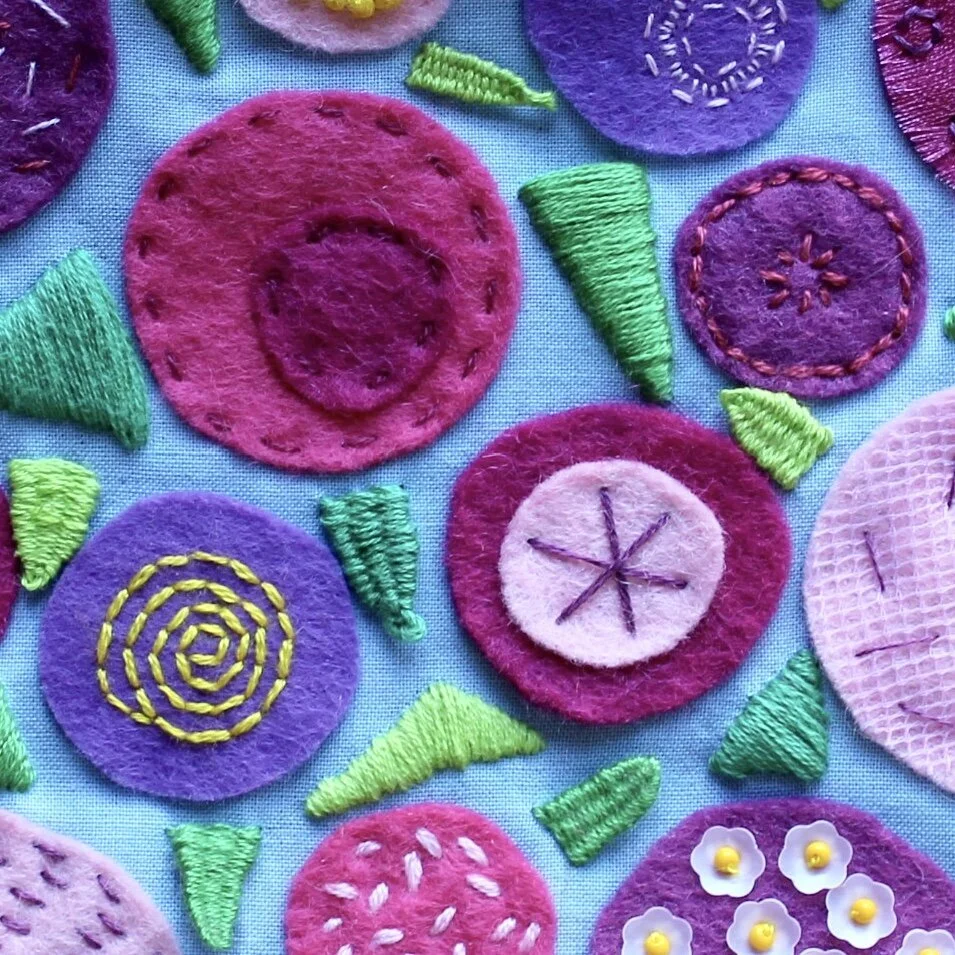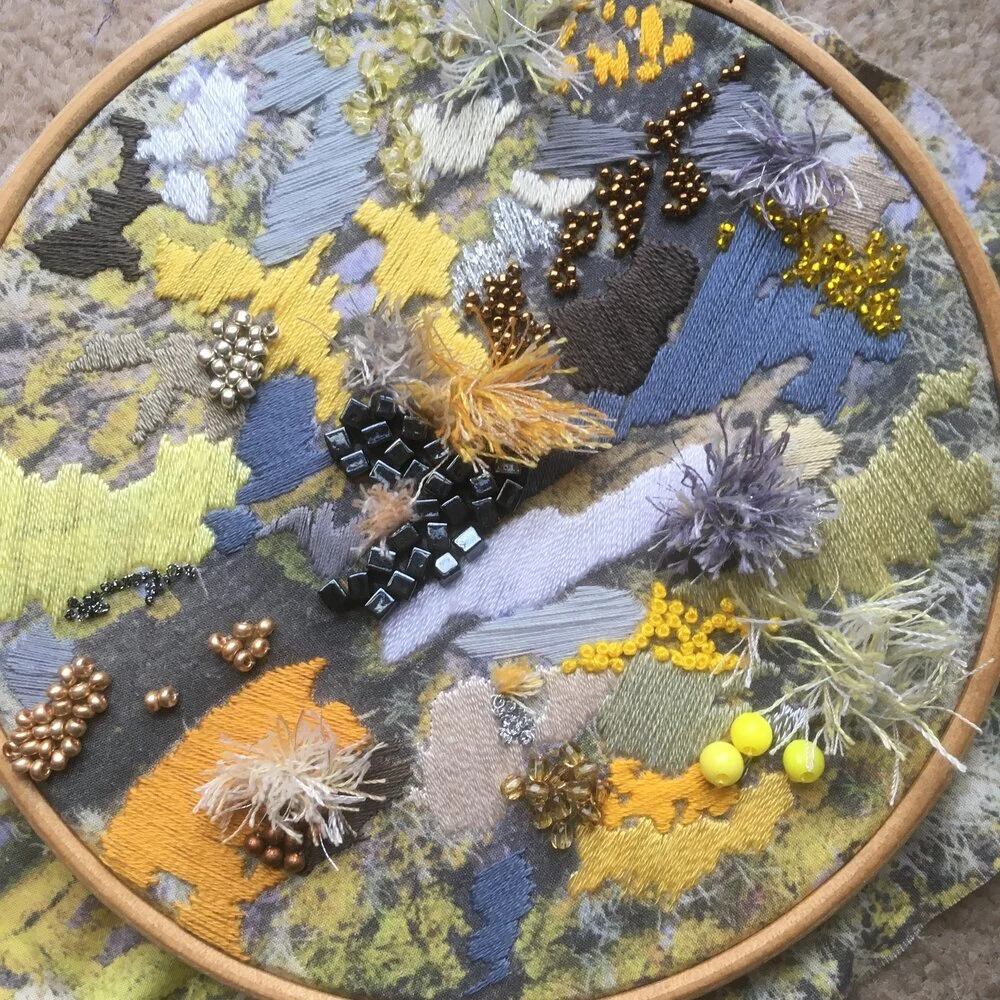When starting out with embroidery you need just a few supplies (that I cover here). But if you are hooked and want to do more and more embroidery what other supplies might it be useful to invest in (or ask for as gifts).
Thread storage
If you’ve stitched a few projects you’ve probably got a growing stash of threads. Investing in some thread storage really helps in finding the colours you need (and ensuring you don’t end up buying skeins of colours you already have).
This blog post covers different storage options, but my favourite is thread boxes and bobbins.
Embroidery Stand
If you are really hooked on embroidery then you may be stitching for hours on end and finding that you get cramp in your hoop holding hand.
An embroidery stand can hold your hoop for you. It also frees up your non-stitching hand so you can use one hand on the top of the fabric and another underneath.
This stand slips under your leg as you are sat stitching to hold it still.
I tend to make sure that I take regular breaks rather than use a stand but I do use on for really large pieces which are much heavier.
Cutting mat, rotary cutter & quilting ruler
You can cut up fabric for stitching on just using scissors but if you are wanting to make life a little easier for you then a cutting mat, rotary cutter and quilting ruler makes life so much simpler.
I will buy a length of calico, wash it (so there is not shrinkage) and iron it (another great investment is to get an iron purely for your crafting). Then I’ll cut up the fabric into lots of squares for different sized hoops so I always have fabric ready to stitch on.
Daylight bulb or lamp
Especially during the winter if you are wanting to do lots of stitching then investing in a daylight lamp or bulb can be invaluable. It really helps prevent eye strain and in particular when trying to stitch darker colours such as black.
I found that the IKEA NÄVLINGE desk lamp works really well for me. It’s not a daylight bulb but can be easily angled onto my embroidery to give some extra light when I find my eyes straining.
Enjoyed this blog post? I share embroidery tips and a free embroidery pattern in my monthly newsletter. Sign up here to receive the newsletter on the 1st of each the month.

